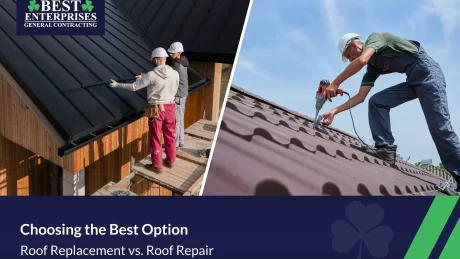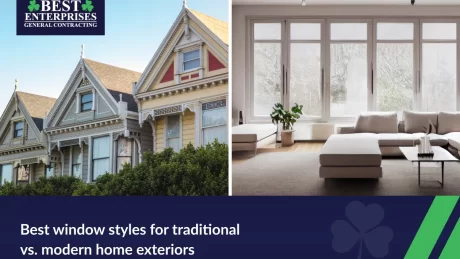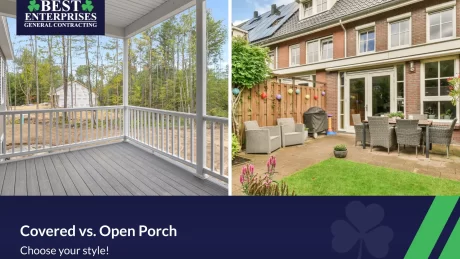Top Window Styles Homeowners Are Choosing in 2025
In 2025, window styles have become more than functional openings they’re design statements that enhance comfort, curb appeal, and energy efficiency. From smart glass innovations to modern black-framed elegance, the top window styles homeowners are choosing in 2025 blend performance and aesthetics like never before.
Whether you’re planning a remodel or upgrading specific features, choosing the right window style can dramatically improve your home’s value, efficiency, and visual impact. In this guide, we’ll explore the most popular window styles for homes in 2025, including energy-efficient, smart, and modern window options.
Why Window Styles Matter in Today’s Remodeling Projects
Upgrading your windows isn’t just a cosmetic change, it’s a strategic improvement that can deliver significant returns in both function and value. In today’s remodeling landscape, choosing the right window style plays a key role in enhancing your home’s aesthetics, efficiency, and long-term performance.
1. Curb Appeal That Sells

Modern window styles like black-framed designs and expansive picture windows offer instant visual impact. They elevate your home’s exterior, create architectural interest, and increase appeal to prospective buyers especially in a competitive market.
2. More Natural Light and Improved Airflow

Smart window placement and thoughtful design choices help flood your interiors with daylight while promoting better cross-ventilation. This not only reduces your reliance on artificial lighting but also creates a healthier, more inviting living environment.
3. Energy Efficiency That Pays Off

Today’s energy-efficient window styles including those with Low-E coatings, double or triple glazing, and insulated frames can reduce heating and cooling costs by up to 30%, according to Energy.gov. Over time, these savings can significantly offset the initial installation cost.
4. Boosted Home Value

According to the 2024 Cost vs. Value Report from Remodeling Magazine, homeowners can recoup an average of 69–73% ROI on window replacement projects. It’s one of the highest-return investments you can make in a home remodel.
The Top Window Styles Trending in 2025
As homeowners become more design-savvy and energy-conscious, window styles are evolving to reflect both aesthetics and performance. Here are the top window styles dominating U.S. home trends in 2025, blending modern appeal with practical innovation.
1. Black-Framed Windows: Bold, Sleek, and Modern
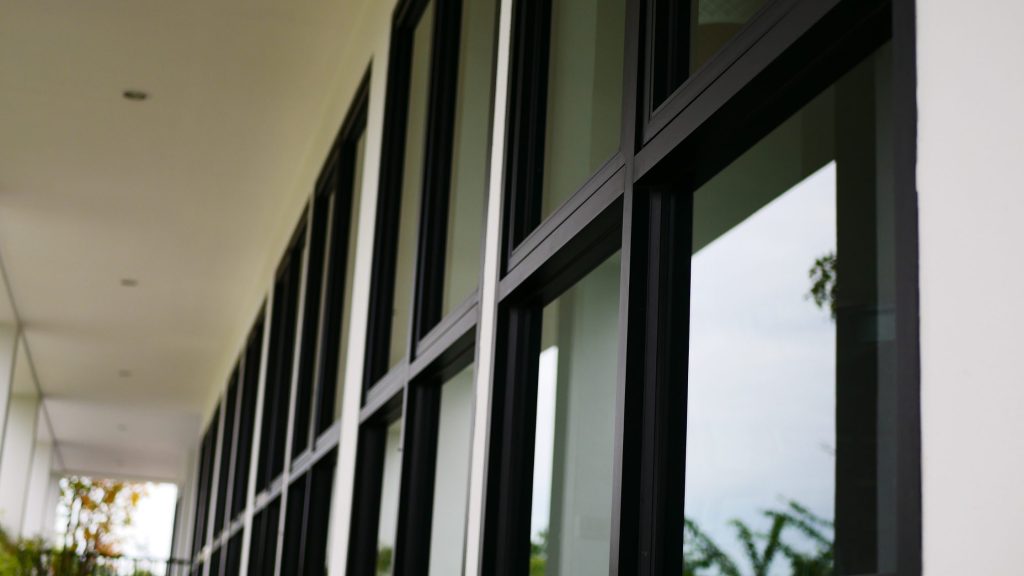
Bold black frames continue to define contemporary design in 2025. Typically crafted from aluminum, fiberglass, or composite materials, these windows offer striking contrast and a clean, architectural look especially when paired with light exteriors or minimalist interiors.
Why homeowners love them:
- Works across modern, industrial, and farmhouse designs
- Durable and low-maintenance finish resists fading and corrosion
- Enhances the home’s structural lines with a clean, defined border
2. Floor-to-Ceiling Picture Windows: Uninterrupted Views

Luxury meets simplicity with picture windows that span floor to ceiling, offering expansive outdoor views and maximum daylight. These windows are fixed, meaning they don’t open, but their impact on design and natural lighting is unmatched.
Ideal for:
- Open-concept spaces with scenic surroundings
- Homes with landscape or waterfront views
- Passive solar heating designs to reduce energy use
3. Casement Windows: Versatile and Energy-Efficient

Casement windows, which open outward with a side hinge, are one of the most energy-efficient window styles in 2025. They seal tightly when closed and allow for full vertical ventilation, making them ideal for various climates and home designs.
Energy highlights:
- Often ENERGY STAR® certified
- Optimal for maximizing airflow and natural cooling
- Creates a tighter seal than sliding or double-hung alternatives, reducing drafts and energy loss
4. Smart Windows: Technology Meets Comfort

As smart home technology advances, smart windows have become a game-changing feature in modern remodels. These dynamic windows can adjust tint, block UV rays, and even operate remotely via apps or voice assistants like Alexa or Google Home.
Key features:
- Automatic or scheduled tinting based on sunlight
- On-demand privacy with switchable glass
- Helps reduce HVAC strain by controlling interior heat and glare
5. Sliding Glass Windows: Clean Lines & Indoor-Outdoor Flow

Sliding windows and doors remain a favorite in 2025 for their sleek look and space-saving function. Ideal for modern homes with decks or patios, they allow for wide, uninterrupted views and easy indoor-outdoor transitions.
Advantages:
- Space-saving design (no inward or outward swing)
- Ideal for maximizing wall openings and natural light
- Available in a range of custom sizes and materials
6. Double-Hung Windows: Classic Meets Customizable

A timeless favorite, double-hung windows feature two movable sashes that slide up and down independently. Their traditional charm makes them a go-to choice for older homes but modern materials and upgrades have made them popular in new builds, too.
Popular in:
- Colonial, Craftsman, and Cape Cod architecture
- Historic restorations where aesthetics and function are both priorities
- Budget-conscious remodels seeking style and performance
Best Window Styles for Different Home Types
Every home has a unique architectural identity and the window styles you choose should enhance, not clash with, that character. Whether your house is sleek and modern, historically inspired, or designed for coastal living, here are the best window styles for 2025 tailored to your home type.
1. Modern Homes: Clean Lines and Smart Functionality

Modern homes emphasize simplicity, efficiency, and high-tech integration. In 2025, homeowners are gravitating toward bold yet streamlined window styles that match the minimalist architecture of today’s modern builds.
Top Window Choices:
- Black-framed picture windows – Create a striking contrast and deliver uninterrupted views that align with open floor plans.
- Smart glass windows – Seamlessly integrate with smart home systems, offering auto-tinting and remote control for light and privacy.
- Casement or sliding windows – Feature slim profiles and smooth operation, ideal for clean, unobtrusive designs.
2. Traditional & Colonial Homes: Timeless Charm, Modern Comfort

For homes with classic architecture like Colonial, Cape Cod, or Craftsman styles the goal is to preserve timeless aesthetics while upgrading comfort and performance.
Top Window Choices:
- Double-hung windows with divided lites – Honor historical design with traditional grille patterns while providing modern functionality.
- Bay and bow windows – Add dimension and elegance, perfect for formal living rooms or front-facing facades.
- Wood-clad or simulated wood frames – Combine old-world warmth with modern insulation and durability.
3. Coastal & Contemporary Homes: Views, Ventilation, and Resilience

Homes near the coast or in high-wind zones need windows that are both visually expansive and structurally resilient. In 2025, the focus is on maximizing views and protecting interiors from sun, salt, and storms.
Top Window Choices:
- Casement windows – Offer excellent ventilation and are ideal for areas prone to strong winds.
- Sliding glass windows with UV protection – Enhance indoor-outdoor flow while blocking harmful rays that can fade furniture and flooring.
- Impact-resistant frames and laminated glass – Designed to withstand extreme weather without compromising style.
Expert Tips for Choosing the Right Window Style

With so many options available, choosing the right window style for your home can feel overwhelming. But a smart selection goes beyond appearance; it ensures year-round comfort, energy efficiency, and long-term satisfaction.
Before finalizing your window installation plans, here are key expert tips to guide your decision.
Ask Your Contractor These 3 Questions:
- What window styles are best suited to my region’s climate?
- Which materials will offer the best long-term durability and value?
- Can I mix window styles without affecting curb appeal?
Also, consider how the window style fits your home’s architecture, lighting needs, and ventilation goals.
Conclusion: Invest in Window Styles That Add Value
As we move through 2025, window styles are no longer a minor design detail; they’re a major influence on how a home performs, feels, and looks. From energy-efficient window styles that reduce utility costs to smart window styles homeowners are embracing for tech-driven convenience, the trends reflect a shift toward smarter, more sustainable living.
Whether you’re drawn to modern window styles 2025 like black-framed picture windows or prefer the timeless versatility of double-hung windows, the right choice depends on your home’s architecture, climate, and long-term goals. Today’s most popular window styles for homes don’t just enhance curb appeal, they add measurable value and comfort. By exploring the top window styles 2025 has to offer, you’re not just following trends you’re future-proofing your home. From minimalist designs to advanced automation, there’s a solution for every home type and homeowner preference.
Ready to bring your vision to life? Contact our team today for expert guidance on choosing the best window styles for modern homes 2025, tailored to your space, budget, and lifestyle.
Need a Roof Upgrade? These 5 Reasons Say Now’s the Time
Your roof is your home’s first shield against harsh weather be it wind, rain, scorching heat, or freezing cold. Yet despite its critical role, it’s often overlooked until visible damage demands attention. From mysterious ceiling stains to sky-high energy bills, the warning signs are easy to miss or ignore. But delaying a roof upgrade can lead to costly repairs, safety risks, and energy inefficiencies.
Upgrading your roof isn’t just about patching leaks, it’s a smart investment in your home’s safety, comfort, and long-term value. In this article, we’ll explore five clear signs that your roof needs replacing and why acting now could save you money, stress, and future headaches.
5 Key Signs You Need a Roof Upgrade
1. Visible Roof Damage (Leaks, Missing Shingles, or Cracks)
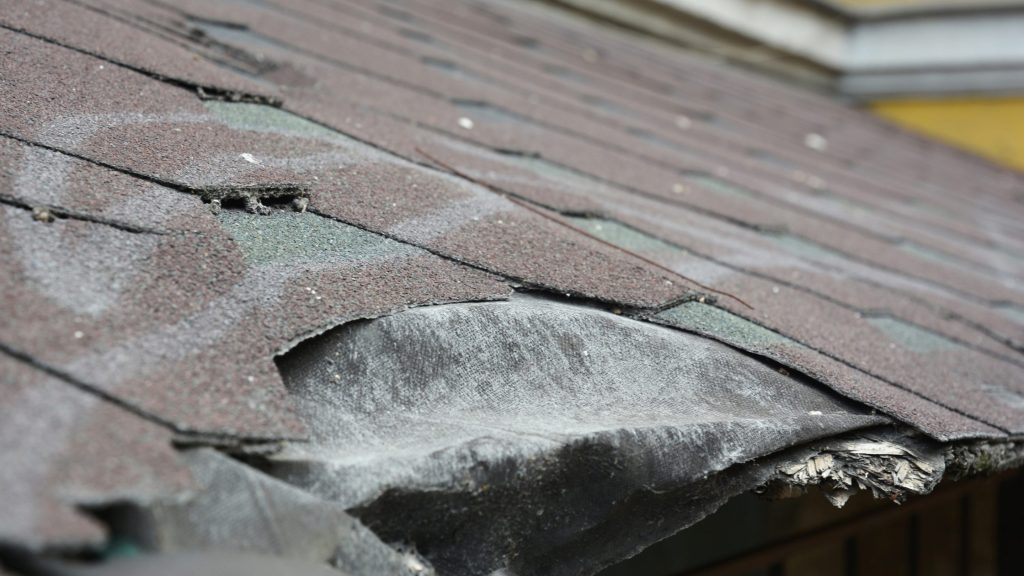
If your roof is missing shingles, showing dark streaks, or developing cracks, it’s waving a red flag. Even minor leaks can escalate into major structural issues, leading to costly repairs down the line. Water stains on ceilings, damp attic insulation, or sunlight peeking through the rafters often signal compromised flashing or deteriorated roofing materials. Another warning sign? Finding shingle granules in your gutters is a telltale sign that your roof’s protective surface is breaking down.
Pro Tip: Don’t dismiss curling shingles, cracked flashing, or a sagging roofline. These are signs of aging materials or hidden water damage that demand immediate action.
2. Rising Energy Bills Due to Poor Insulation
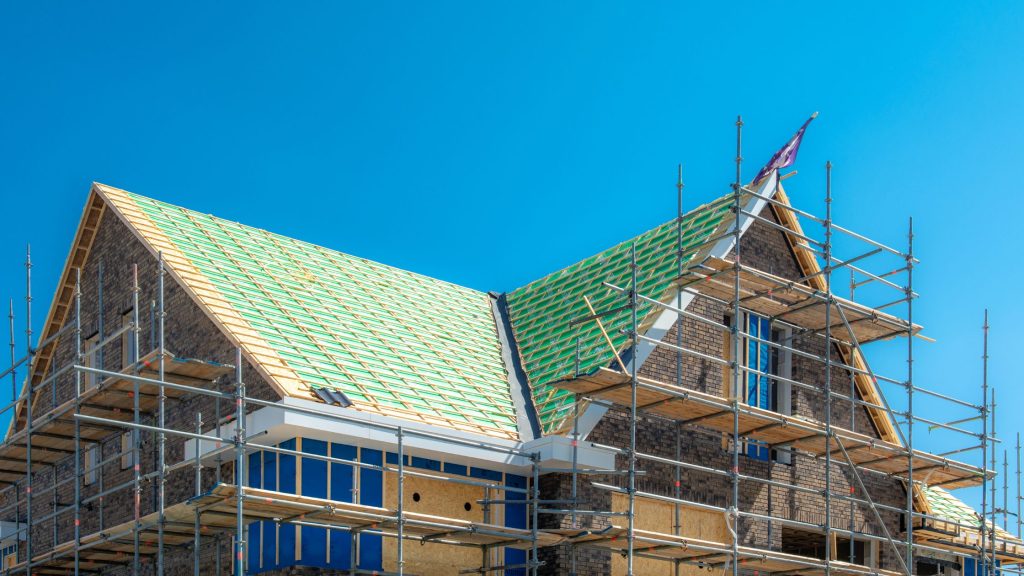
If your heating or cooling costs have suddenly increased, your roof might be to blame. Older or damaged roofs often lack proper insulation or ventilation, causing your HVAC system to work overtime. Modern roofing systems with energy-efficient materials like cool roof shingles or reflective metal panels help maintain consistent indoor temperatures and reduce utility bills year-round.
Bonus Benefit: Energy-efficient roofs not only save money but also enhance indoor comfort, especially during extreme weather.
3. Your Roof is Over 20 Years Old
How old is your roof?
- Asphalt shingles: 20-25 years
- Metal roofing: 40-70 years
- Clay or concrete tiles: 50+ years
Even if your older roof looks fine from the ground, time and weather slowly degrade its materials. Older roofs are also less likely to meet modern building codes and energy efficiency standards. If your roof is approaching or past its expected lifespan, it’s better to upgrade proactively than risk a sudden failure during a storm or heavy snowfall.
4. Frequent Repairs Are Adding Up

A leak here, a missing shingle there… if your roof feels like a constant maintenance project, it’s time to take a step back and look at the bigger picture. Regular roof repairs may seem cheaper in the short term, but those costs can quickly add up without solving the root of the problem. Frequent patchwork often indicates deeper issues like water damage, aging materials, or improper installation. And every repair usually comes with added expenses: inspection fees, emergency service charges, or interior damage from repeat leaks.
Why It Matters: Ongoing repairs don’t just hit your wallet they disrupt your life. Constant water intrusion can damage insulation, drywall, flooring, and even electrical systems, leading to further unexpected costs.
5. You’re Planning to Sell Your Home Soon

Thinking of putting your home on the market? Your roof could make or break the sale. Buyers notice the roof first, and a worn or damaged one can raise red flags, cause hesitation, or even reduce offers.
A new roof doesn’t just improve curb appeal it signals that the home is well-maintained, energy-efficient, and move-in ready. That reassurance can help your property stand out in a competitive market.
Did You Know? According to Remodeling Magazine’s Cost vs. Value Report, homeowners can recoup 60–70% of the cost of a roof replacement at resale. In some hot housing markets, a new roof can even drive bidding wars and quicker sales.
Additional Benefits of a New Roof Before Selling:
- Increases appraisal value
- Passes home inspections with ease
- Attracts FHA or VA loan buyers (who may require roof certification)
- Lowers the chances of buyer negotiations or credits at closing
Pro Tip: Pair your new roof with other exterior upgrades like fresh paint or new gutters to create a powerful first impression and maximize your home’s resale potential.
Benefits of Upgrading Your Roof Now
1. Enhanced Protection Against Extreme Weather

Today’s roofing materials are engineered for resilience in the face of increasingly unpredictable and severe weather. Whether you live in a region prone to hurricanes, hailstorms, or heavy snow, a modern roof provides superior protection.
- Impact-resistant shingles (Class 4 rated) can withstand hail and flying debris.
- Metal roofing systems offer exceptional wind resistance—some rated to handle gusts over 140 mph.
- Fire-rated materials (Class A) can slow the spread of flames and are especially beneficial in wildfire-prone areas.
- Advanced waterproofing technologies, such as synthetic underlayments and ice-and-water shields, help prevent interior water damage even during torrential rains.
Bottom line: A roof upgrade means you’re better prepared for the next big storm—and less likely to face costly emergency repairs.
2. Improved Energy Efficiency & Lower Utility Bills
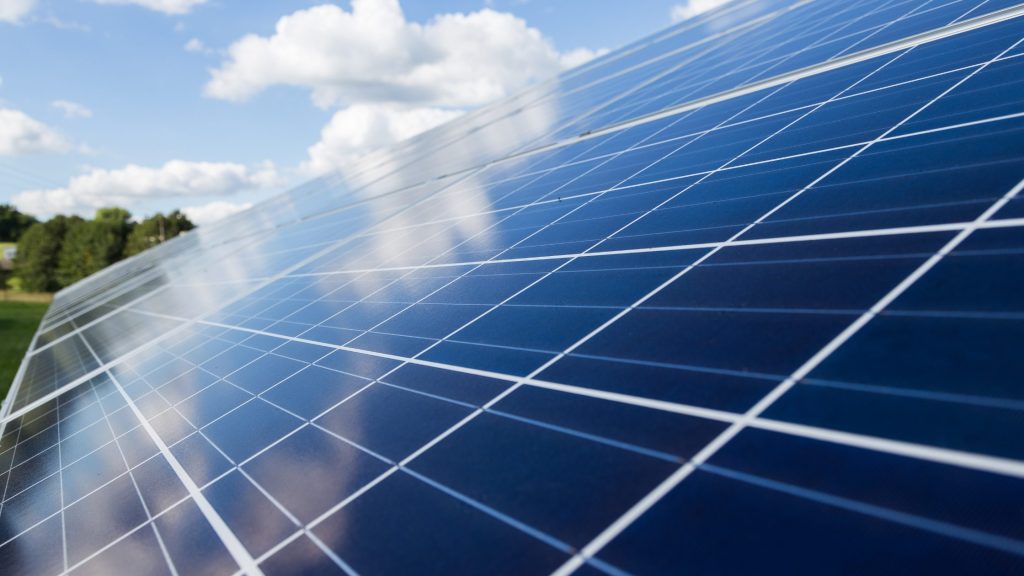
An outdated or poorly insulated roof is a silent energy drain, making your HVAC system work harder year-round. New roofing systems use energy-efficient technologies that regulate indoor temperatures more effectively.
- Cool roof coatings and reflective shingles can lower surface temperatures by up to 50°F, significantly cutting cooling costs in hot climates.
- Proper attic ventilation reduces heat buildup in summer and moisture accumulation in winter, both of which impact energy efficiency and roof health.
- Insulated underlayment and radiant barriers help retain warmth in colder seasons, reducing heating expenses.
Result: You’ll enjoy a more comfortable home and potentially save hundreds per year on energy bills.
3. Increased Home Value & Curb Appeal
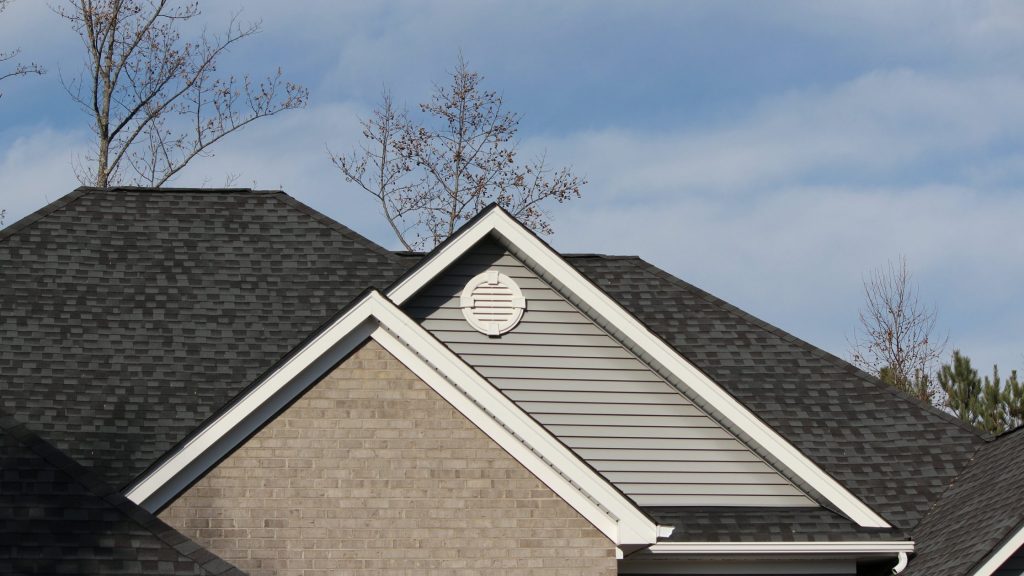
A roof upgrade is one of the most visible and valuable home improvements you can make.
- Modern roofing materials come in a variety of colors, profiles, and finishes that can complement or elevate your home’s architectural style.
- Enhanced curb appeal makes a strong first impression on potential buyers, neighbors, and appraisers.
- According to real estate experts, a new roof can boost resale value and attract more qualified buyers, especially in competitive markets.
Fast Fact: A new roof can increase your home’s appraised value by as much as 5–10% and help it sell faster, often with fewer negotiations.
4. Peace of Mind & Long-Term Savings

Beyond the visible improvements, a new roof delivers lasting security and savings.
- Manufacturer warranties typically range from 25 years to lifetime coverage, depending on the material and installer.
- Less frequent repairs and maintenance mean lower long-term ownership costs.
- You gain confidence during storms, knowing your home is well-protected against leaks, wind, and mold-causing moisture.
Added Bonus: Modern roofing systems are easier to inspect, maintain, and clean—saving you time and stress over the years.
How to Know If You Need a Roof Upgrade
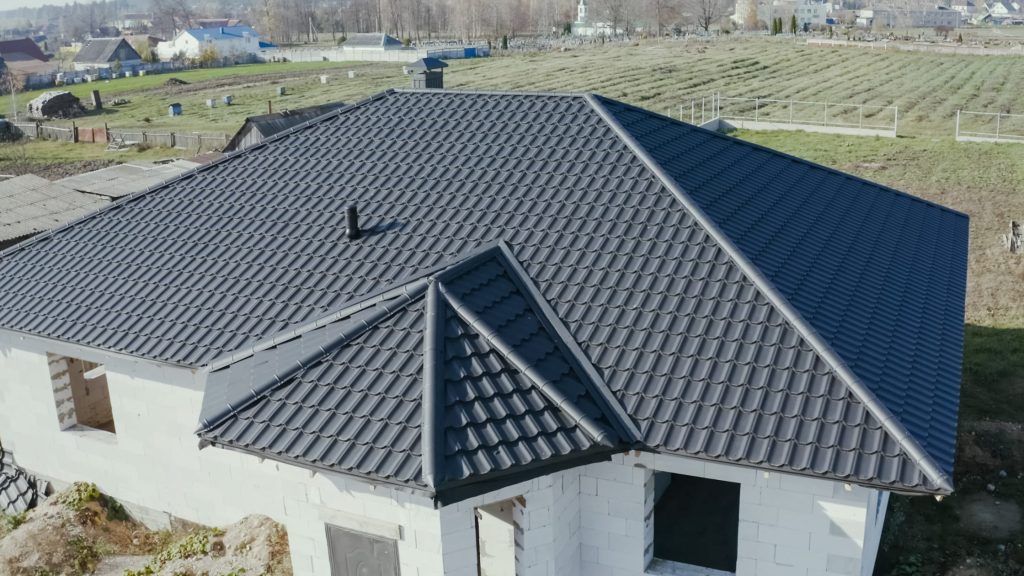
Not sure whether your roof needs replacing or just a few repairs? Start with a simple self-inspection to catch early warning signs before they become costly problems. Here’s what to look for:
DIY Roof Check: What to Look For
- Daylight in the Attic: Head into your attic during the day. If you see beams of sunlight peeking through the roof boards, it means there are gaps or holes that need attention.
- Sagging or Soft Spots: Walk around your roof (if safe to do so) and feel for areas that are sagging or spongy. This may indicate water damage or compromised structural support.
- Mold, Mildew, or Moss Growth: Watch for green or black growth along roof valleys or shady areas. These can trap moisture and accelerate the breakdown of roofing materials.
- Granules in the Gutters : Asphalt shingles shed granules as they age. If your gutters are filling up with these gritty particles, it’s a sign your shingles are wearing out and may no longer offer full protection.
Next Steps: When to Call a Professional
If you notice any of these red flags or simply haven’t had a roof inspection in over a year it’s time to bring in a licensed roofing contractor. Most reputable companies offer free or low-cost inspections, along with detailed estimates for repair or full replacement.
Pro Tip: Always ask for a written inspection report and compare at least two to three quotes before making a decision. A trusted professional can help you determine whether minor repairs will suffice or if a full roof upgrade is the smarter, long-term choice.
Conclusion
Upgrading your roof is more than just a home improvement; it’s a smart, long-term investment in your property’s safety, efficiency, and value. As highlighted throughout this article, there are clear signs you need a new roof, including visible damage, frequent repairs, rising energy bills, or simply the age of your current roof. Ignoring these issues can lead to more severe problems like structural damage, mold, or energy loss. On the other hand, the benefits of a roof upgrade are substantial.
A new roof offers enhanced protection against extreme weather, improved insulation, lower utility bills, and increased curb appeal especially important if you’re planning to sell your home. If you’re unsure how to know if you need a roof upgrade, start with a basic inspection and follow up with a professional assessment. Most reputable roofing contractors offer free or low-cost evaluations to help you make an informed decision. Don’t wait for costly damage to occur. Proactive roof replacement ensures peace of mind and adds long-term value to your home.
Ready to take the next step? Contact Best GC today for a free estimate and expert guidance on upgrading your roof with confidence.
Open-Concept vs Traditional Kitchens: Which is Right for your Home?
Choosing Between Open-Concept and Traditional Kitchens: A Remodeler’s Guide
Trying to decide between open-concept vs. traditional kitchens? This comprehensive remodeler’s guide breaks down the key differences, pros and cons, and lifestyle considerations. Whether you’re remodeling or building from scratch, it’s essential to understand each layout’s advantages—from better space flow and natural light to privacy and storage.
Explore how open-concept kitchens foster social interaction, modern aesthetics, and better flow, while traditional kitchens offer focused functionality, extra storage, and classic design appeal. This article also introduces hybrid solutions, real-life examples, and design inspirations to help you strike the perfect balance.
What is an Open-Concept Kitchen?

An open-concept kitchen is a modern layout that removes physical barriers like walls or doors between the kitchen and surrounding areas such as the dining room or living room. This seamless integration creates a unified living space that feels larger, brighter, and more connected. Open kitchens are popular in contemporary homes because they promote interaction, enhance visibility, and improve the overall flow of the home.
Key Features of Open-Concept Kitchens:
- No interior walls separating the kitchen from dining and living spaces, allowing for a continuous, cohesive layout
- Expansive kitchen islands that serve multiple functions, from meal prep to casual dining and entertaining
- Abundant natural light due to open sightlines and fewer obstructions between windows and living areas
- Airy, spacious feel that makes even smaller homes appear larger and more welcoming
- Improved social interaction, letting homeowners cook, entertain, and connect with family or guests at the same time
Whether you’re hosting a dinner party or helping kids with homework while making dinner, an open-concept kitchen supports a more connected and interactive lifestyle.
What is a Traditional Kitchen Layout?
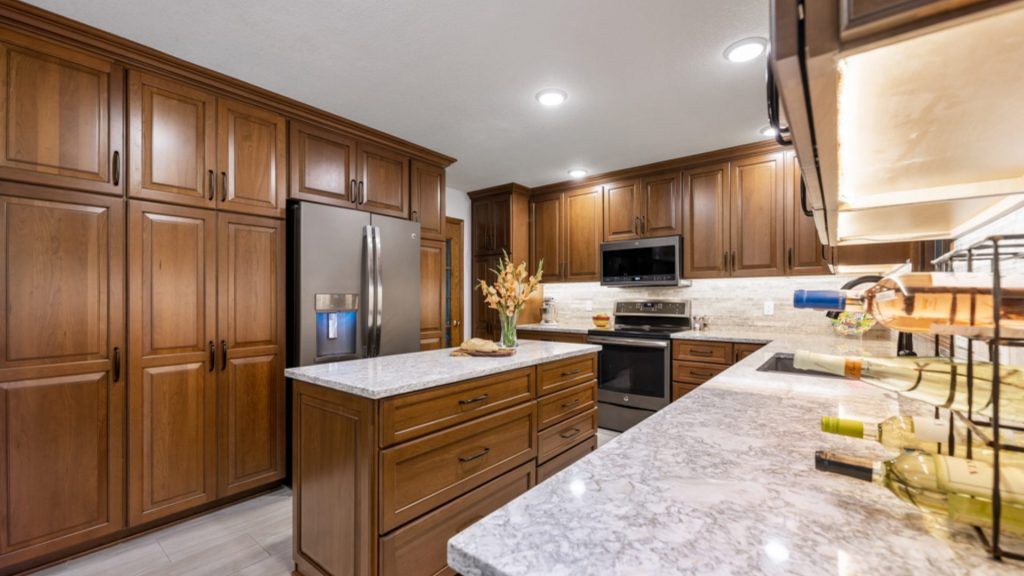
A traditional kitchen layout features a defined, enclosed space that is separate from the rest of the home. Designed with function and privacy in mind, this classic kitchen style typically includes walls, doorways, or partitions that create clear boundaries between the kitchen and adjacent rooms. The traditional kitchen emphasizes a more structured workflow, allowing homeowners to focus on cooking without distractions from nearby living spaces.
Key Features of Traditional Kitchens:
- Clearly defined room boundaries, offering separation between cooking and living or dining areas
- Maximized wall space for cabinets, shelves, and appliances, ideal for ample kitchen storage
- Quiet, focused cooking environment, with fewer distractions and interruptions
- Better control of kitchen elements, such as odors, noise, and visual clutter
- Classic design appeal, often suited to formal layouts and timeless interior styles
Traditional kitchens are a favorite for homeowners who value privacy and organization. They also offer a dedicated cooking zone, away from household distractions.
Open-Concept vs. Traditional Kitchens: A Side-by-Side Comparison
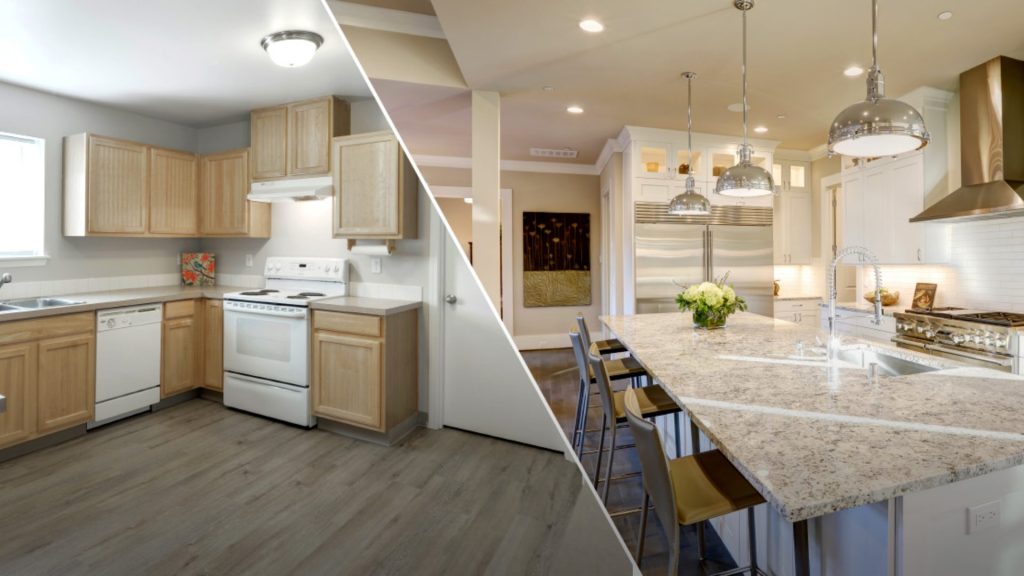
Still deciding between an open-concept kitchen and a traditional kitchen layout? Here’s a detailed comparison across five key categories to help you determine which kitchen style aligns best with your home, lifestyle, and long-term goals.
| Category | Open-Concept Kitchen | Traditional Kitchen |
| Space and Layout | Perfect for small homes, apartments, or condos where maximizing space is essential. The open flow makes the kitchen feel larger and more connected. | Well-suited for larger homes where maintaining room separation adds structure and function. Offers more defined zones for cooking and dining. |
| Social Interaction | Ideal for entertaining or multitasking, watching kids, chatting with guests, or hosting gatherings seamlessly. | Promotes concentration during meal prep. Socializing tends to happen outside the kitchen area. |
| Design Flexibility | Fewer walls mean fewer upper cabinets but more room for large kitchen islands and multi-use furniture. | Ample wall space allows for extensive cabinetry, creative storage, and customizable layouts. |
| Noise and Smells | Without walls, sounds and cooking odors can spread easily. High-quality ventilation is a must. | Enclosed space helps contain noise and smells, keeping the rest of the home undisturbed. |
| Resale Value | Very popular with modern buyers, especially millennials and young families looking for open living. | Still valued by some buyers, particularly those who appreciate traditional layouts or formal dining rooms. |
Pros and Cons of Open-Concept Kitchens

Choosing an open-concept kitchen layout offers many advantages, especially for modern living but it’s essential to weigh the trade-offs before deciding. Below is a quick overview of what to expect:
Pros of Open-Concept Kitchens
- Maximizes small spaces: Open layouts create the illusion of more square footage, making apartments and compact homes feel more spacious and open. This is particularly beneficial in modular kitchen design where space efficiency is key.
- Perfect for entertaining and multitasking: Whether you’re hosting guests, helping kids with homework, or watching TV, an open kitchen allows you to stay connected and socially engaged while preparing meals.
- Enhanced natural light and traffic flow: With fewer interior walls, daylight can reach more parts of the home, reducing the need for artificial lighting and improving overall home ambiance.
- Visually unifies interior design themes: Open kitchens allow seamless integration with living room and dining room décor, aligning with popular kitchen interior design trends like modern minimalism and Scandinavian aesthetics.
- Great for families and social households: Parents can supervise children while cooking, and the space naturally encourages group interaction making it ideal for young families or those who entertain often.
Cons of Open-Concept Kitchens
- Lack of privacy and visual separation: Kitchen messes, appliances, and prep areas remain visible from other rooms, which may not suit those who prefer a more polished or formal appearance.
- Noise and cooking smells travel easily: Without barriers, sounds from blenders, timers, or conversations can echo, and odors from food preparation can spread quickly. High-quality ventilation systems are necessary.
- Limited upper cabinet storage: The reduction in wall space often limits options for overhead cabinets, leading to storage challenges especially in homes without a pantry.
- Requires consistent tidiness: Since everything is on display, open-concept kitchens demand a higher level of daily organization and cleanliness to maintain visual appeal.
Pros and Cons of Traditional Kitchens
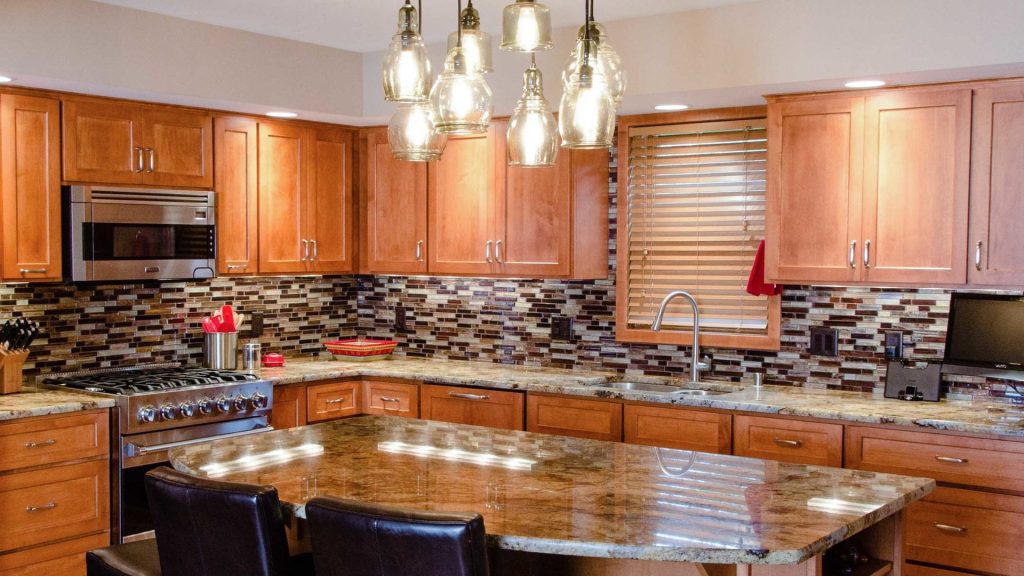
A traditional kitchen layout emphasizes structure, separation, and functionality. While it may not align with contemporary open-living trends, it continues to offer solid benefits for many households.
Pros of Traditional Kitchens
- More cabinet and storage space: Defined walls provide ample real estate for upper and lower cabinets, pantry areas, and built-in appliances. This supports a wide variety of cooking tools, especially in homes with extensive culinary needs.
- Easier to control clutter, noise, and smells: Kitchen activities stay within the room, reducing disruption to the rest of the house. This makes traditional layouts better for those who cook aromatic or complex dishes frequently.
- Dedicated cooking zone: The enclosed layout allows for focused, efficient meal prep. It’s especially ideal for serious cooks or bakers who appreciate uninterrupted workspace.
- More appliance and layout flexibility: Traditional kitchens are better suited to accommodate larger or multiple appliances like double ovens, built-in freezers, or additional prep sinks.
Cons of Traditional Kitchens
- Reduced social interaction: Being enclosed means the cook is often separated from guests or family members, making it harder to socialize or multitask while preparing meals.
- Can feel closed-off in smaller homes: Without the open flow of modern layouts, traditional kitchens may seem tight or confined particularly in smaller homes or apartments.
- Less adaptable to contemporary floor plans: Traditional kitchens may feel outdated in homes designed with open or flexible living spaces in mind. This can influence resale appeal, especially among younger or first-time buyers.
Choosing Between Open-Concept vs. Traditional Kitchens for Your Lifestyle
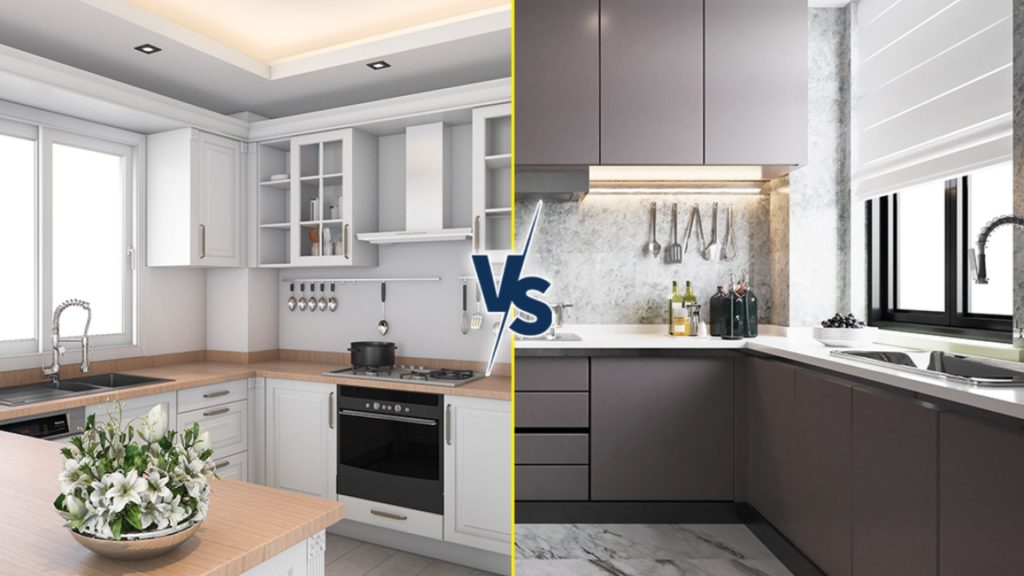
Deciding between an open-concept kitchen and a traditional kitchen layout comes down to your daily routines, cooking habits, and long-term home goals. Each layout caters to different lifestyles, so it’s important to reflect on how you use your kitchen space.
Consider the following questions to guide your choice:
- Do you frequently entertain, or do you prefer a quiet, focused cooking environment?
- Is storage a top priority, or are you more concerned with visual openness and flow?
- Do you live in a smaller home or apartment that would benefit from a spacious feel, or a larger home where distinct rooms work well?
- Are you thinking about resale value and appealing to modern homebuyers?
Choosing the Right Fit
Open-Concept Kitchen:
- Ideal if you love entertaining, staying engaged with family while cooking, or want to maximize the feel of space in a smaller home.
- Best for homeowners who value natural light, multi-use areas, and a modern, social atmosphere.
Traditional Kitchen Layout:
- Great for those who prefer privacy, structure, and organization in the kitchen.
- Suits larger homes or anyone who prioritizes ample storage, focused functionality, and visual separation between rooms.
By evaluating your priorities and how you use your home, you can confidently choose the kitchen design style that supports your lifestyle whether it’s open-concept, traditional, or a smart hybrid of both.
Conclusion
When it comes to the decision between open-concept vs. traditional kitchens, there’s no universally perfect answer, only the solution that best fits your space, lifestyle, and design preferences.
Both kitchen layouts offer distinct advantages:
- Open-concept kitchens deliver connectivity, visual space, and modern appeal perfect for entertaining or family living.
- Traditional kitchens offer structure, privacy, and ample storage ideal for those who prioritize functionality and organization.
Whether you’re planning a kitchen remodel in a compact urban apartment or designing your dream kitchen in a spacious suburban home, understanding the pros and cons of open-concept vs. traditional kitchens equips you to make a confident, informed decision that enhances both daily living and long-term home value.
Roof Replacement vs Roof Repair: How to Make the Right Choice
Overview: Choosing Between Roof Repair and Replacement for Long-Term Value and Protection
Deciding between roof replacement vs roof repair is a critical step in maintaining your home’s safety and value. Whether you’re facing storm damage, aging shingles, or frequent leaks, this guide will help you understand the pros, cons, and costs of each option so you can make an informed decision.
This comprehensive guide breaks down everything you need to know to make a smart choice for your home’s protection, energy efficiency, and resale value. From spotting warning signs to understanding costs and benefits, we’ll help you weigh your options confidently. Plus, you’ll get expert tips for roof inspections and maintenance all tailored to your unique situation.
Understanding the Difference: Roof Repair vs. Roof Replacement
When your roof shows signs of wear or damage, it’s essential to know whether a repair will suffice or a full replacement is necessary. Each option serves a different purpose and depends on the age, condition, and extent of the roofing issue.
What is Roof Repair?
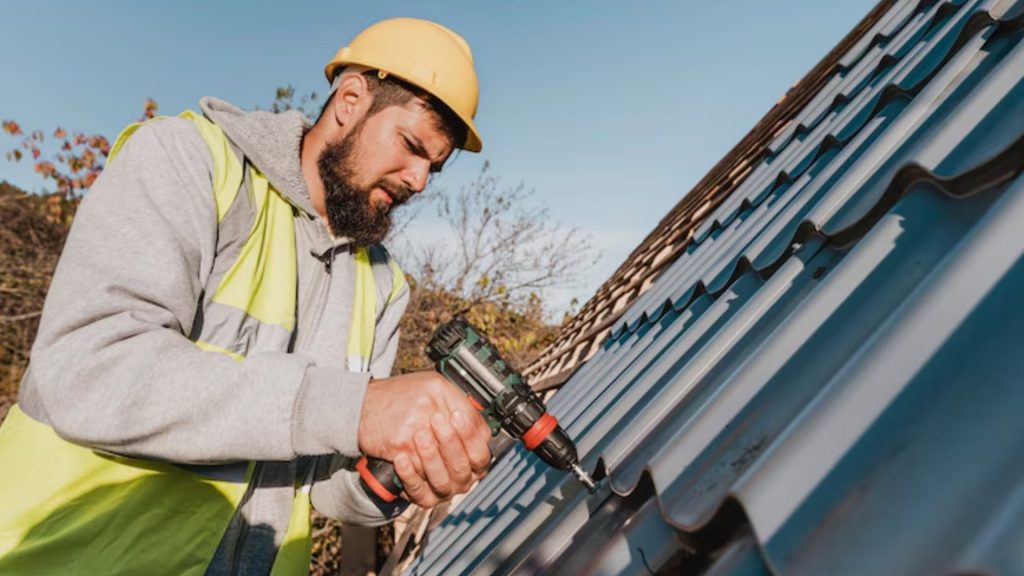
Roof repair refers to the process of addressing isolated problems on an otherwise functional roof. Common repair tasks include replacing damaged or missing shingles, sealing leaks, fixing flashing, and patching small areas impacted by weather or aging.
Benefits of Roof Repair:
- Cost-Effective: Repairs are generally more affordable than full replacements, making them a budget-friendly solution for minor issues.
- Quick Turnaround: Most repairs can be completed in a day or two, minimizing disruption to your home.
- Extends Roof Lifespan: Targeted repairs can help maximize the remaining years of an aging roof.
- Ideal for Localized Damage: If the problem is limited to one area like a small leak or storm damage a repair is often the most efficient option.
What is Roof Replacement?
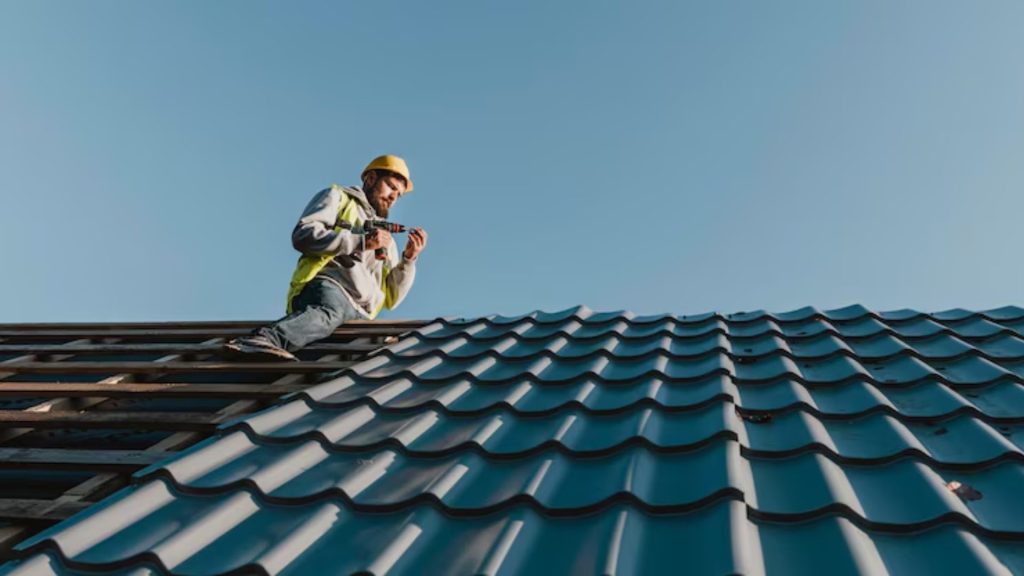
Roof replacement involves removing the existing roofing system down to the deck and installing new materials either due to age, widespread damage, or structural concerns. In some cases, re-roofing (laying new shingles over the old ones) may be an option, depending on local codes and the condition of the existing layers.
Scenarios That Require Roof Replacement:
- Extensive Water Damage or Mold: When leaks go unnoticed or are widespread, moisture can rot the underlying structure and cause mold growth, necessitating a full replacement.
- Roof Age: Most asphalt shingle roofs last around 20–30 years. If your roof is near or beyond its expected lifespan, replacement ensures long-term protection.
- Structural Issues: A sagging roof or compromised decking indicates foundational problems that repairs can’t fix.
- Multiple Repair Attempts: If you’ve had several repairs over the years and issues persist, replacing the entire roof might be more cost-effective in the long run.
- Storm or Hail Damage: Severe weather events can cause widespread shingle loss, granule erosion, or even deck damage, warranting full replacement.
How to Decide: Key Factors That Influence Your Choice
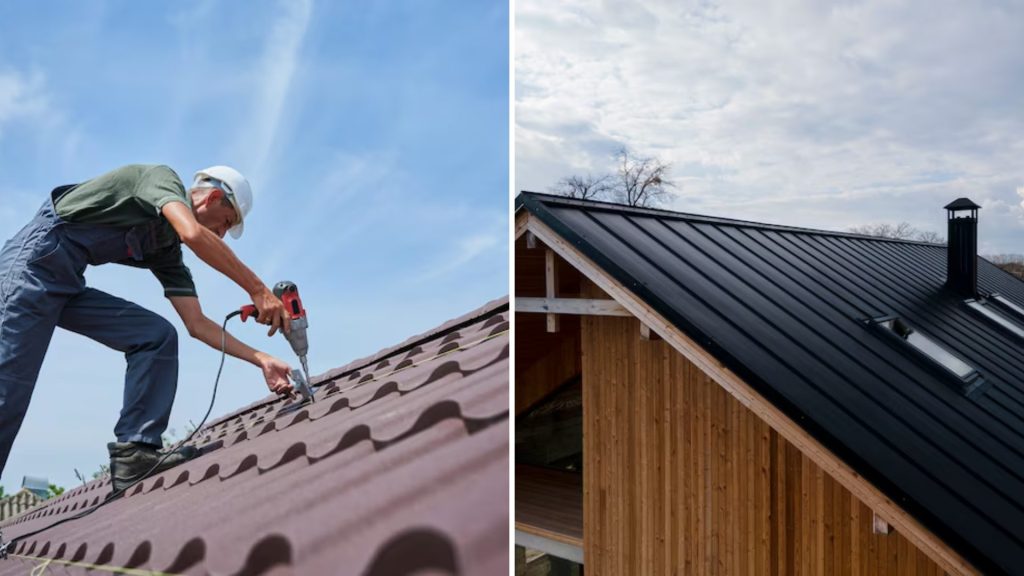
Deciding between a roof repair and a full roof replacement comes down to more than just patching up problems. Here are the key factors to consider when evaluating the best course of action for your home:
1. Age of the Roof
The age of your current roofing system is one of the most critical indicators. Asphalt shingle roofs typically last between 15 to 30 years, metal roofs can last anywhere from 40 to 70 years, and tile or slate roofs may even exceed 100 years with proper maintenance.
If your roof is nearing or has passed its expected lifespan, investing in another repair might only delay the inevitable. In such cases, replacement becomes more cost-effective and ensures long-term protection for your home.
2. Extent and Type of Damage
Not all roof damage is equal. Minor issues like a few missing shingles or small, localized leaks can usually be resolved with quick repairs. However, widespread damage, frequent leaks, water stains across ceilings, or signs of structural sagging suggest deeper problems that repairs can’t solve.
If your roof shows signs of mold growth, water infiltration across multiple areas, or noticeable drooping, it’s a red flag that a replacement is necessary to restore structural integrity and safety.
3. Roof Inspection Results
Hiring a licensed roofing contractor for a professional inspection provides crucial insight. A thorough inspection will evaluate the roof’s structural integrity, ventilation systems, insulation performance, and the presence of moisture or rot.
Based on the results, a contractor can recommend whether targeted repairs are sufficient or if a complete overhaul is needed. Always request a detailed written estimate for both repair and replacement options so you can compare short-term costs with long-term benefits.
4. Budget and Long-Term Home Goals
Your financial situation and future plans for the home will greatly influence your decision. If you’re looking for a budget-friendly, short-term fix especially if you plan to move soon repairs might make more sense. However, if you’re staying in your home for many more years, a roof replacement is a smart investment. It not only reduces ongoing maintenance but can also boost your home’s value, improve curb appeal, and offer stronger protection against future weather events. Think of repairs as a band-aid and replacement as long-term healthcare for your home.
5. Energy Efficiency and Structural Soundness
Old or compromised roofs often contribute to insulation problems, leading to increased energy bills, uneven indoor temperatures, and a less comfortable home environment. Leaks or poor ventilation can also encourage mold and mildew, posing health risks.
A new roof offers modern materials and improved insulation that can significantly increase energy efficiency. It helps your home stay cooler in the summer and warmer in the winter, reduces the strain on your HVAC system, and restores the overall structural stability of your home.
Cost Comparison: Roof Repair vs. Roof Replacement
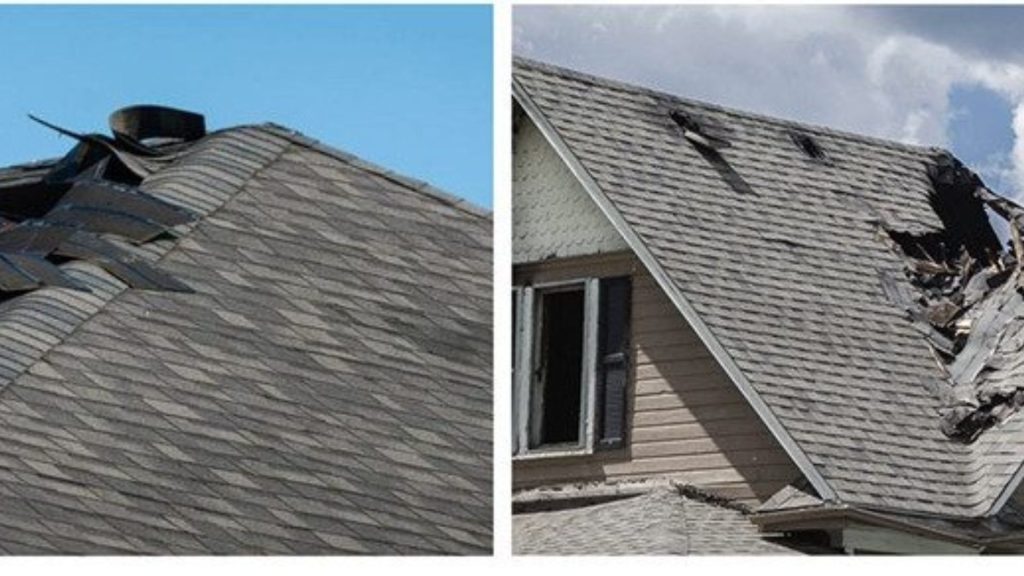
Understanding the cost difference between repairing a roof and replacing it entirely is essential for planning your budget and making the right decision for your home.
National Averages in the U.S.
- Roof Repair: Typically $150 to $1,500 depending on damage severity. Minor shingle replacements or leak patches cost less, while larger repairs involving flashing or decking may cost more.
- Roof Replacement: Usually ranges from $6,000 to $25,000+, depending on home size, roof complexity, and materials (asphalt, metal, tile, etc.).
Key Factors That Influence Roofing Costs
Several elements can affect the total cost of either a repair or a replacement:
- Roof Size and Pitch: Larger roofs or those with steep slopes are more labor-intensive and expensive to work on.
- Material Selection: Asphalt shingles are usually the most budget-friendly, while metal, slate, tile, and wood shakes come with higher material and labor costs.
- Geographic Location: Labor and material prices vary across regions. For example, roofing costs in coastal or urban areas tend to be higher than in rural areas.
- Labor Costs: Hiring experienced, licensed roofing contractors may cost more upfront but ensures better workmanship and fewer issues down the line.
- Permit and Disposal Fees: Depending on local building codes, you may need permits for roof replacement. Also, old material disposal and cleanup can add to the overall bill.
What About Insurance?
In many cases, homeowners insurance may cover all or part of your roofing costs, but only under certain conditions. Most policies provide coverage if the damage is caused by sudden, unavoidable events—such as hailstorms, high winds, fallen trees, or fire. However, general wear and tear or neglect usually aren’t covered.
To increase your chances of receiving coverage:
- Document the damage with photos.
- Schedule a professional roof inspection as soon as possible.
- Contact your insurance provider promptly and file a claim if applicable.
Pro Tip: Even if you’re not sure the damage qualifies, it’s worth having an expert assess your roof and assist with the claims process.
Pros and Cons: Roof Repair vs. Roof Replacement
Making the right decision starts with understanding the benefits and drawbacks of each option. Here’s a detailed breakdown:
Roof Repair
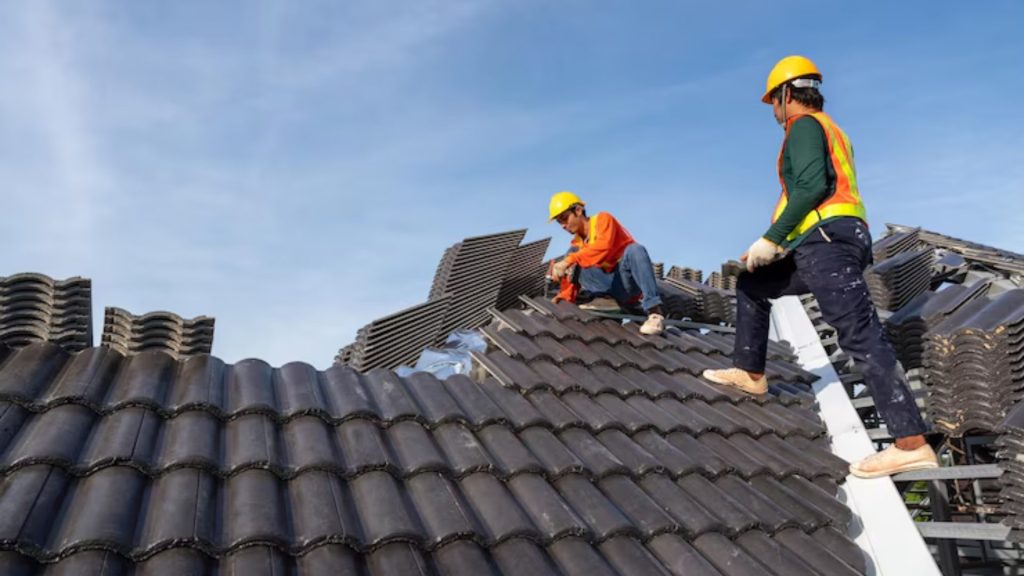
Roof repair is a practical and cost-effective solution when dealing with minor or isolated roofing issues. It allows you to fix specific problems quickly without the expense or disruption of replacing the entire roof. However, repairs are generally temporary and best suited for roofs that are still relatively new or in good overall condition.
Pros of Roof Repair:
- Lower Upfront Cost: Much more affordable than a full replacement, making it a great option for minor issues or tight budgets.
- Faster Completion: Most repairs can be completed in 1–2 days with minimal disruption.
- Extends Roof Life: Helps prolong the lifespan of a relatively new or mid-life roof.
- Targeted Fix: Ideal for addressing isolated problems such as missing shingles or small leaks.
Cons of Roof Repair:
- Temporary Solution: Repairs only offer a short-term fix, especially on aging roofs.
- Recurring Costs: Multiple repairs over time can add up and may end up costing more than a replacement.
- Limited Structural Impact: Doesn’t address hidden structural issues or underlying damage.
- Minimal Efficiency Gains: Little to no improvement in insulation or energy efficiency.
Roof Replacement
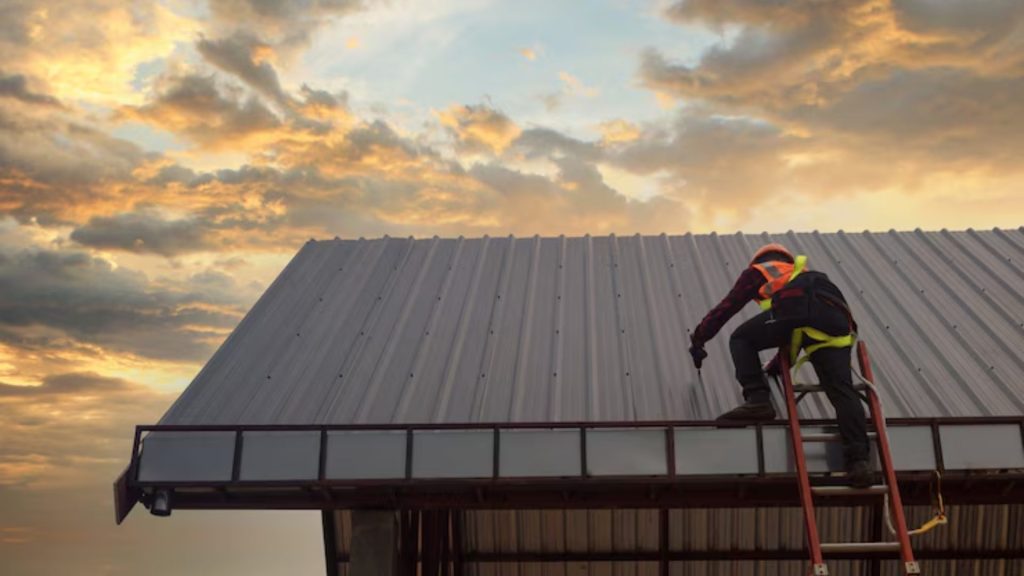
Roof replacement is a more significant investment that offers long-term benefits. It involves removing the old roof and installing a new one, which strengthens your home’s structural integrity, boosts energy efficiency, and increases property value. While the upfront cost and time commitment are higher, a new roof provides peace of mind and protection for decades to come.
Pros of Roof Replacement:
- Long-Term Investment: Provides 20–30+ years of durability and peace of mind.
- Structural Renewal: Allows full inspection and reinforcement of the entire roofing system.
- Boosts Energy Efficiency: Modern materials and insulation can significantly reduce energy bills.
- Increases Home Value: Enhances curb appeal and resale value, making it a smart investment for long-term homeowners.
- Warranty Benefits: New roofs often come with manufacturer and workmanship warranties.
Cons of Roof Replacement:
- Higher Initial Cost: Significantly more expensive than a repair, which may not be ideal for all budgets.
- Longer Project Timeline: Can take several days to a week to complete, depending on size and complexity.
- Permit and Disposal Fees: May require permits and involve costs for removing and discarding old materials.
- Weather Dependency: Scheduling and completion can be affected by bad weather conditions.
Conclusion: Your Roof, Your Investment Make the Right Call
When it comes to roof replacement vs. roof repair, there’s no one-size-fits-all answer. The right choice depends on the age of your roof, the extent of the damage, your budget, and your long-term homeownership goals.
Minor leaks or missing shingles? A repair might be all you need. But if your roof is nearing the end of its lifespan or showing widespread wear, investing in a full replacement could save you money and stress down the road.
The key takeaway? Don’t get a professional roof inspection. It’s the smartest step toward protecting your home’s value, energy efficiency, and structural safety.
Ready to take the next step? Schedule a free roof inspection or estimate today and get expert guidance tailored to your specific situation.
Best Window Styles for Modern and Traditional Homes
When it comes to home remodeling, windows are more than just glass panes that let in light; they’re powerful design elements that define a home’s aesthetic, functionality, and energy efficiency. Choosing the right window style can dramatically enhance curb appeal, improve ventilation, and even reduce your utility bills. But with so many options out there, how do you know which window style works best for your home?
Whether you’re upgrading a sleek, modern space or restoring a charming traditional home, this expert guide will walk you through the best window styles tailored to both aesthetics. We’ll break down the differences between modern and traditional styles, offer professional advice, and help you make confident, value-adding decisions.
Why Window Style Matters in Home Remodeling

Windows are more than just functional features they’re architectural focal points that shape the look, feel, and livability of your home. Choosing the right window style can have a transformative effect, as well-selected windows:
- Maximize natural light and improve ventilation, creating brighter, healthier living spaces
- Reinforce your home’s architectural character, whether it’s modern, traditional, farmhouse, or colonial
- Boost curb appeal and property value, making your home more attractive to potential buyers
- Enhance energy efficiency, helping to regulate indoor temperatures and lower utility bills
Every home style has its own design rules. Choosing windows that follow these rules keeps your home looking balanced and timeless.
Best Window Styles for Modern Homes
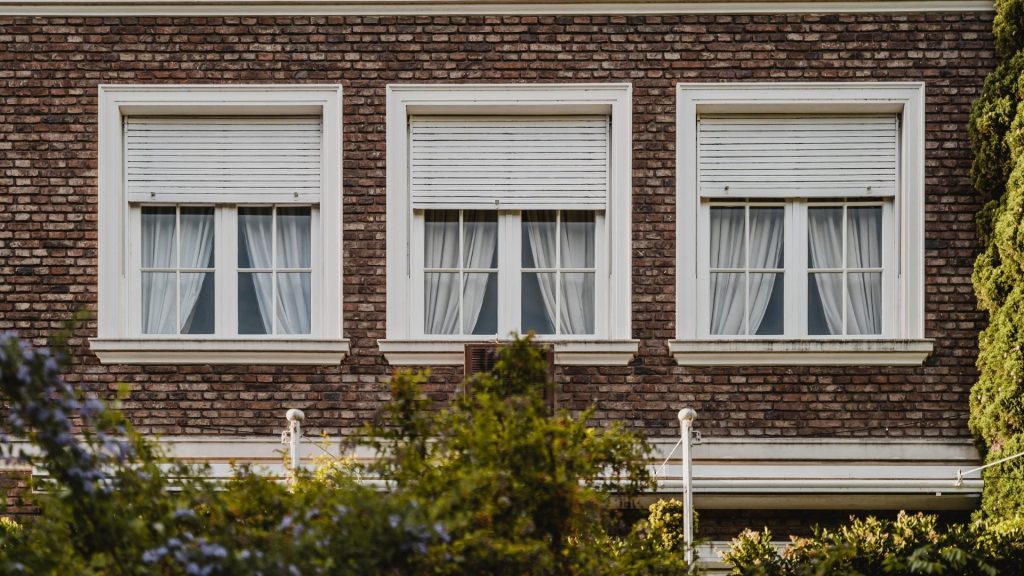
Modern architecture is characterized by simplicity, functionality, and an intentional connection to the surrounding environment. In this context, windows take center stage not just as sources of light and ventilation, but as bold design elements that define a home’s character. Whether you’re building new or remodeling, choosing the right window style is essential to achieving a clean, contemporary look that enhances comfort and visual flow.
Key Trends of Modern Window Styles
- Minimalist framing: Thin profiles and clean lines create a streamlined appearance and maximize glass exposure.
- Expansive glazing: Large panes or floor-to-ceiling glass bring the outdoors in, enhancing natural light and spatial flow.
- High-performance glass: Low-E coatings, double or triple glazing, and UV protection improve energy efficiency without compromising style.
- Geometric precision: Shapes like rectangles and squares dominate modern aesthetics, reinforcing order and symmetry.
- Indoor-outdoor harmony: Windows that open wide or remain unobstructed help blend indoor living with exterior spaces.
Top Modern Window Styles to Consider
1. Picture Windows
Fixed and frameless, picture windows are designed to do one thing exceptionally well: frame the outside world like a living work of art. With no moving parts to obstruct the view, they invite panoramic scenery and abundant natural light into your home.
2. Casement Windows
Sleek and practical, casement windows open outward via side hinges, allowing for excellent airflow and uninterrupted views. Their tall, narrow profile enhances vertical lines a signature of modern architecture.
3. Sliding Windows
With a simple horizontal glide, sliding windows offer functionality, clean aesthetics, and space efficiency. They’re ideal for modern layouts where form meets function, especially in rooms with limited clearance or compact walls.
4. Floor-to-Ceiling Windows
Also known as window walls, floor-to-ceiling windows are a bold statement in contemporary design. They erase boundaries between indoors and outdoors, dramatically boosting natural light and visual openness.
5. Clerestory Windows
Positioned high on the wall often just below the roofline clerestory windows are a clever way to bring in sunlight while maintaining privacy and wall space for artwork or furniture. They’re often used in open-concept homes and flat-roofed structures.
6. Awning Windows
Hinged at the top and opening outward, awning windows allow for ventilation even during rain. Their compact, horizontal design makes them versatile and easy to pair with other window styles for a custom modern look.
Best Window Styles for Traditional Homes

Traditional home styles like Colonial, Victorian, Cape Cod, and Craftsman are known for their symmetry, architectural detail, and timeless character. Choosing the right window style helps preserve that charm. Moreover, it adds functionality and curb appeal. In these homes, windows often feature wood frames, decorative grilles, and classic shapes that align with the home’s historic aesthetics.
Top Traditional Window Styles to Consider
1. Double-Hung Windows
A hallmark of American residential architecture since the 18th century, double-hung windows feature two vertically sliding sashes that open independently. This style offers excellent ventilation control and a clean, symmetrical look that suits Colonial, Georgian, and Federal-style homes.
2. Bay and Bow Windows
Bay (three-panel) and bow (four or more panels) windows project outward from the wall, adding architectural interest and interior space. Common in Victorian and Queen Anne homes, these windows often include a center fixed pane flanked by operable casements or double-hung units.
3. Sash Windows
Traditional sash windows typically single-hung or double-hung are iconic in Colonial, Victorian, and Craftsman homes. Their timeless vertical movement and narrow sightlines preserve the home’s historical look.
4. Arched & Palladian Windows
Inspired by Renaissance architecture, arched and Palladian windows feature a central arched window flanked by rectangular units. Popular in Federal and Neoclassical homes, these grand windows create a sense of symmetry and elegance.
5. Dormer Windows
Dormers are vertical windows that extend from a sloped roof, adding usable space and light to upper floors. Found in Cape Cod, Tudor, and Cottage-style homes, dormers also contribute to the home’s exterior silhouette.
6. Garden Windows
A charming offshoot of the bay window, garden windows extend outward to create a sun-filled nook, often with shelving and glass on three sides. Especially beloved in farmhouse and cottage-style kitchens, these windows merge utility with beauty.
Modern vs. Traditional Window Styles: A Side-by-Side Comparison
When it comes to choosing window styles for your home or project, understanding the key differences between modern and traditional designs can help you find the perfect fit. Below, we break down the characteristics, aesthetics, materials, and functionality of modern and traditional windows to help you decide.
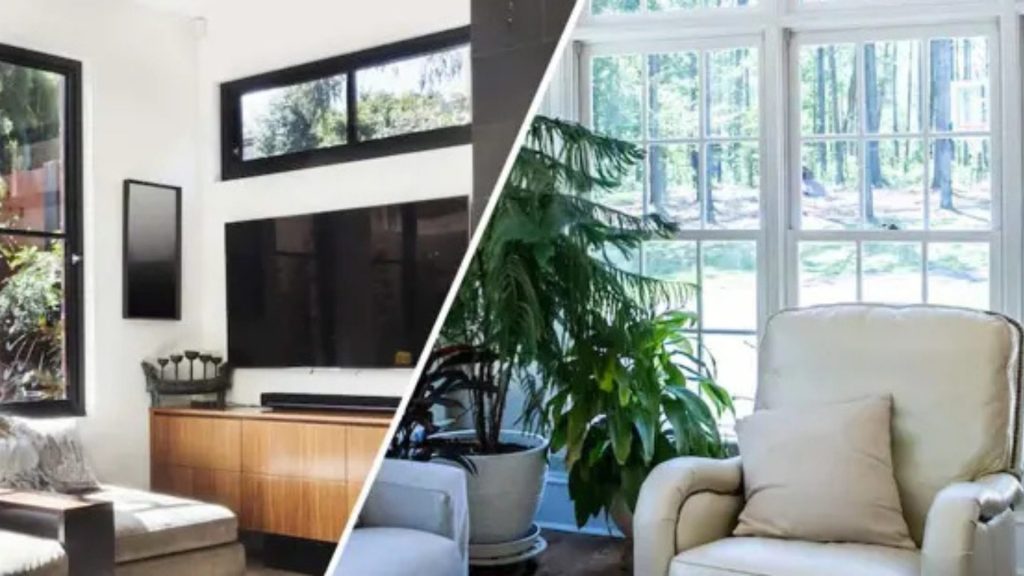
| Feature | Modern Window Styles | Traditional Window Styles |
|---|---|---|
| Look | Sleek, minimal, large glass panes | Ornate, classic, divided panes |
| Materials | Aluminum, vinyl, composite | Wood or wood-clad |
| Glass | Expansive, energy-efficient | Smaller panes, decorative options |
| Function | Fixed, sliding, casement | Double-hung, casement, awning |
| Efficiency | High-performance glazing | Varies, often upgraded for efficiency |
| Colors | Neutral tones, black, gray | Whites, wood stains, earth tones |
| Best For | Modern homes, contemporary spaces | Historic, cottage, colonial homes |
| Maintenance | Low-maintenance | Regular upkeep (especially wood) |
How to Choose the Right Window Style for Your Home
Selecting the right window style is about more than just looks it’s a key decision that impacts your home’s comfort, efficiency, and overall character. Whether you’re renovating a historic property or building new, here’s how to make a choice that balances form and function:
1. Match Windows to Your Architecture

The right window style can enhance your home’s architectural charm, while the wrong choice can disrupt its overall balance. Mismatched window designs can feel out of place, detracting from curb appeal and diminishing your home’s value.
- Tip: Observe the architecture of other homes in your neighborhood or in similar areas to get a sense of what works visually. You’ll likely find that homes built in similar styles share similar window features.
- Consider Architectural Features:
- Colonial homes often have symmetrical, rectangular windows, with double-hung or casement styles paired with decorative grilles.
- Victorian homes may incorporate bay or bow windows, with ornate details like stained glass or divided lites.
- Modern homes often embrace large, open window expanses with sleek frames and minimalism, while Craftsman homes emphasize wood windows with detailed trim and grid patterns.
2. Prioritize Energy Efficiency

Energy-efficient windows are a must for maximizing comfort and cutting energy costs. According to the U.S. Department of Energy, up to 30% of your home’s heating and cooling costs can be lost through poorly insulated windows. The right window choices can keep your home comfortable year-round, reducing reliance on heating and cooling systems.
- What to Look For:
-
- Low-E Glass: Coatings on Low-E glass help reflect heat back into your home in winter and block heat from entering during the summer, all while letting in natural light.
- Double or Triple-Pane Glass: These windows have multiple layers of glass separated by air or gas, which act as insulating barriers, reducing heat transfer.
- ENERGY STAR® Certification: Windows that meet these standards are independently tested to ensure they offer superior energy performance.
- Proper Placement: Think about window orientation, south-facing windows maximize passive solar heating in the colder months, while shading and overhangs protect against overheating in the summer.
3. Maintenance and Material
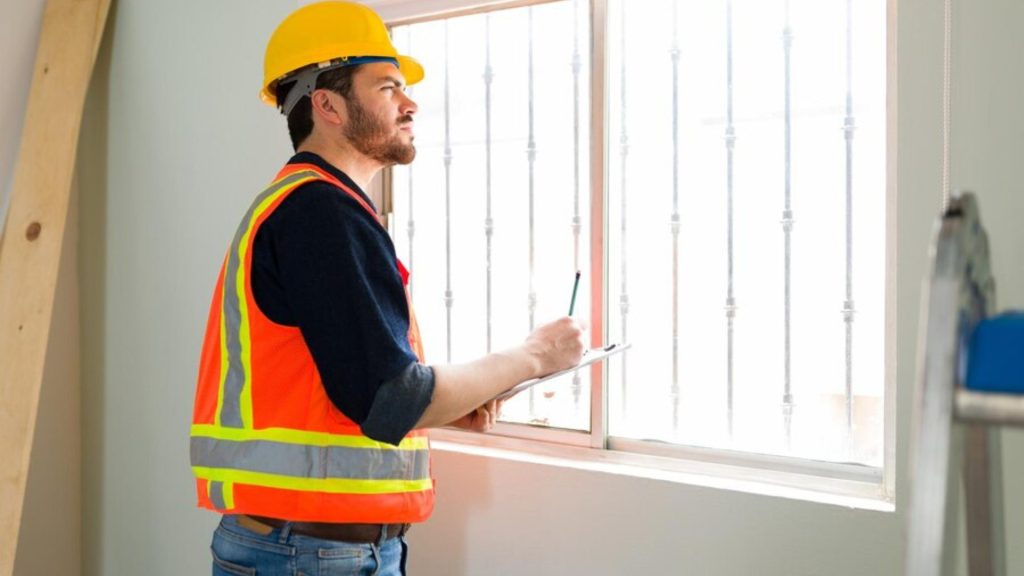
Your choice of window material affects not only the style but also the maintenance and energy efficiency of your windows. Understanding the pros and cons of each option ensures that you choose a material that meets your needs for both design and upkeep.
- Wood: Wood windows offer a timeless, classic look that is perfect for traditional homes. They provide excellent insulation and a natural beauty that enhances the overall appeal of your home. However, wood windows require regular maintenance, such as painting or staining, to protect against moisture, rot, and warping. Over time, they can also fade or discolor, especially in harsh weather conditions. Regular inspections and upkeep are crucial, particularly in humid or coastal areas, to preserve their integrity and appearance.
- Vinyl: Wood windows offer a timeless, classic look that is perfect for traditional homes. They provide excellent insulation and a natural beauty that enhances the overall appeal of your home. However, wood windows require regular maintenance, such as painting or staining, to protect against moisture, rot, and warping. Over time, they can also fade or discolor, especially in harsh weather conditions. Regular inspections and upkeep are crucial, particularly in humid or coastal areas, to preserve their integrity and appearance.
- Fiberglass: fiberglass windows are an excellent choice. They are extremely durable, resistant to expansion or contraction, and provide excellent insulation, outperforming both wood and vinyl in energy efficiency. While fiberglass windows come with a higher upfront cost compared to vinyl, they offer long-term savings in energy efficiency and durability, making them a smart investment. Fiberglass windows require minimal maintenance, as they are highly resistant to moisture, warping, and fading, making them ideal for a variety of climates.
- Aluminum: aluminum windows are sleek, strong, and modern with a slim profile, making them perfect for contemporary homes. They are durable, particularly in hot climates, and provide a clean, modern aesthetic. However, aluminum windows are poor insulators unless they are thermally broken, meaning they are less energy-efficient than wood or fiberglass. While aluminum windows are generally low-maintenance, it’s important to inspect them for rust, especially in coastal areas, to maintain their performance and extend their lifespan.
Conclusion
Whether your home showcases the clean lines of modern minimalism or the enduring elegance of traditional design, selecting the right window style is essential to creating a space that feels both functional and inviting. The right windows not only elevate your home’s curb appeal but also play a crucial role in improving energy efficiency, comfort, and overall livability. By thoughtfully considering your home’s architecture, your personal style, and your energy goals, you’ll make a lasting investment that enhances both the beauty and functionality of your living space.
At Best Enterprises General Contracting, we specialize in helping homeowners navigate the process of choosing windows that align with their vision and needs. Our experienced team offers tailored recommendations that blend aesthetics with efficiency, ensuring your home looks stunning while staying energy-smart. Contact us today for a free consultation, and let us guide you toward window solutions that enhance your home’s beauty and functionality for years to come.
Flat Roof vs Sloped Roof: Which Is Right for Your Home?
Choosing between a flat roof vs. sloped roof is an important decision for any homeowner planning a renovation or new build. Each style has its own advantages, from energy efficiency to maintenance costs. Both options come with their own set of advantages and drawbacks, making it important to choose the one that best aligns with your home’s style, budget, and location. Understanding the differences between flat and sloped roofs is crucial to making an informed decision that will impact not only your home’s aesthetics but also its durability, energy efficiency, and long-term maintenance.
In this article, we’ll dive into the specifics of both roof types, breaking down their pros and cons, and providing expert advice to help you determine which roof type is right for your home. Whether you’re building a modern minimalist home or renovating a traditional property, we’ll guide you through the decision-making process with clear insights, real-world examples, and actionable tips.
Understanding the Basics: What Are Flat and Sloped Roofs?
What is a Flat Roof?
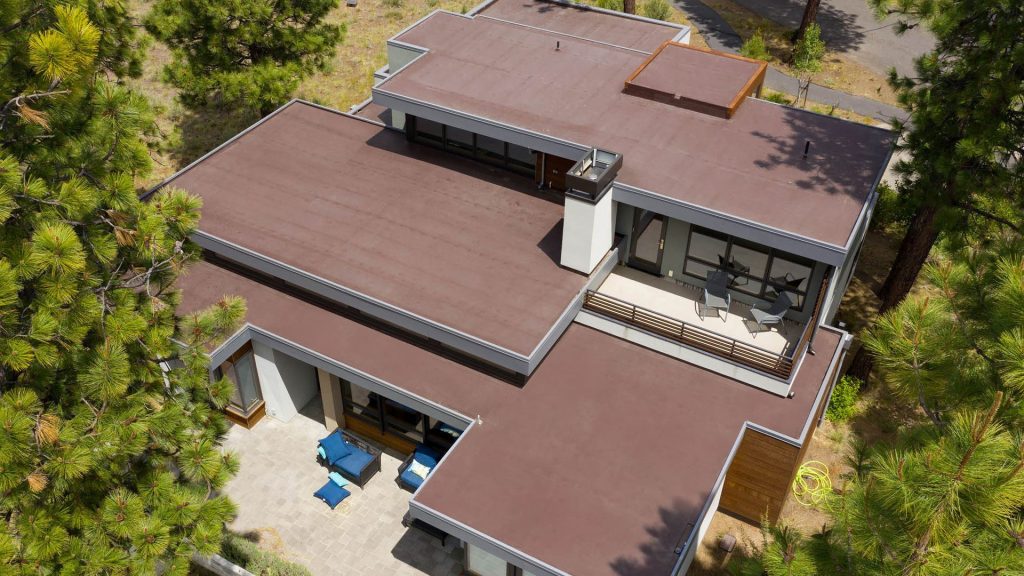
Flat roofs are characterized by their minimal slope, typically less than 10 degrees, which allows for a level surface. These roofs are commonly found in modern architecture, especially in urban or contemporary homes. Materials such as EPDM, TPO, and modified bitumen are typically used for flat roofs due to their durability and ease of installation.
The primary advantage of flat roofs is the additional usable space they provide. Homeowners can install solar panels, create rooftop gardens, or build terraces on flat roofs, making them a practical choice for homes with limited yard space. However, one challenge with flat roofs is drainage. Without proper design and maintenance, flat roofs can accumulate water, leading to leaks or structural issues over time.
What is a Sloped Roof?

Sloped roofs, also known as pitched roofs, are designed with an angle to allow rainwater and snow to easily slide off. This type of roof is common in traditional and suburban homes. Sloped roofs come in various styles, including gable, hip, gambrel, and shed, each offering its own aesthetic and functional benefits.
The key advantage of sloped roofs is their ability to manage water and snow runoff effectively. This reduces the risk of water pooling, which can cause leaks and other issues. Sloped roofs also provide additional space for attic insulation, contributing to better energy efficiency.
Types of Sloped Roof
Sloped roofs come in a wide variety of styles and materials, each offering different benefits in terms of aesthetics, durability, and weather resistance. To help you understand your options, let’s break them down into two main categories: based on material and based on pattern.
1. Sloped Roofs Based on Material
The material you choose for a sloped roof affects not only its look but also its performance, lifespan, and maintenance needs. Below are some of the most common roofing materials used for sloped roofs:
- Asphalt Shingles – The most widely used roofing in the U.S. Affordable, easy to install, and available in many colors and styles. They typically last 15–30 years and are ideal for most climates, though less durable than premium materials.
- Clay or Concrete Tiles – Common on Mediterranean and Spanish-style homes. These tiles are long-lasting, fire-resistant, and insulate well. However, they are heavy and may require additional roof support. Installation is more expensive.
- Metal Roofing – Gaining popularity for both traditional and modern homes. Metal roofs last 40–70 years, are lightweight, and shed rain and snow efficiently. While they cost more upfront, they lower energy bills by reflecting heat.
- Wood Shingles or Shakes
Offer a warm, rustic look, especially on cottages or historic homes. They’re eco-friendly and insulating but need regular maintenance to protect against moisture, insects, and fire. Lifespan is around 20–40 years. - Slate Roofing – One of the most durable and elegant materials. Slate can last over 100 years, is fireproof, and handles extreme weather. It’s also very heavy and expensive, requiring a strong structure and expert installation.
- Composite or Synthetic Shingles – Made to resemble slate, wood, or tile but are lighter and lower maintenance. They’re durable and weather-resistant, though quality varies. High-end versions can be as costly as natural materials.
2. Sloped Roofs Based on Pattern (Design/Shape)
The pattern or shape of a sloped roof impacts how it sheds water, resists wind, and fits into the architectural style of your home. Here are the most common sloped roof designs:
- Gable Roof – A classic triangular shape with two sloping sides. Simple, cost-effective, and great for shedding water and snow. Common in traditional American homes.
- Hip Roof – All four sides slope downward, making it more stable and wind-resistant than gable roofs. Ideal for areas prone to storms or hurricanes.
- Gambrel Roof – A barn-style roof with two slopes per side—the lower being steeper. Adds extra attic or living space and is often seen on Colonial and Dutch-style homes.
- Mansard Roof – A French-inspired design with four sides and a steep lower slope. Maximizes interior space for top floors or attic conversions.
- Shed Roof (Skillion) – A single sloped surface, usually found on modern homes or additions. Easy to build and ideal for installing skylights or solar panels.
- Butterfly Roof – Two roof planes that slope inward, forming a V shape. Offers a unique, modern look and allows for rainwater harvesting and tall windows.
- Combination Roof – Blends styles like gable, hip, or shed roofs to suit custom home layouts. Useful for large homes needing both function and architectural flair.
Pros and Cons of Flat Roofs vs. Sloped Roofs

Flat Roof Pros
- Cost-Effective Installation: Flat roofs are more affordable to install than sloped roofs due to fewer materials and simpler construction. Ideal for budget-conscious homeowners.
- Usable Space: Provides extra space for solar panels, rooftop gardens, or outdoor lounges—especially valuable in urban settings where space is limited.
- Easier Maintenance Access: The flat surface allows for safe and easy access for inspections, cleaning, or minor repairs without needing special equipment.
Flat Roof Cons
- Shorter Lifespan in Harsh Weather: Prone to damage from standing water, UV rays, and snow accumulation if not maintained properly.
- Higher Maintenance Demands: Needs regular cleaning to prevent clogged drains and water pooling, which can lead to leaks or mold.
- Drainage Challenges: Flat roofs require a reliable drainage system—if it’s blocked or poorly designed, water damage can occur quickly.
Sloped Roof Pros
- Superior Drainage & Weather Resistance: Water and snow slide off easily, reducing risk of leaks, structural damage, and ice dams—great for wet or snowy climates.
- Longer Lifespan: Durable and weather-resistant materials like shingles or metal can last decades with minimal repairs.
- Classic Curb Appeal: Traditional sloped roofs enhance a home’s look and are often more appealing to buyers, increasing resale value.
Sloped Roof Cons
- Higher Upfront Costs: More expensive due to complex framing and premium materials; may not suit tight renovation budgets.
- Difficult to Access: Steep angles make inspections and repairs riskier and more expensive, typically requiring professionals.
- Not Ideal for Modern Design: Sloped roofs can clash with minimalist or modern home styles that favor sleek, flat lines.
Key Factors to Consider When Choosing a Roof Type
1. Climate and Weather Conditions
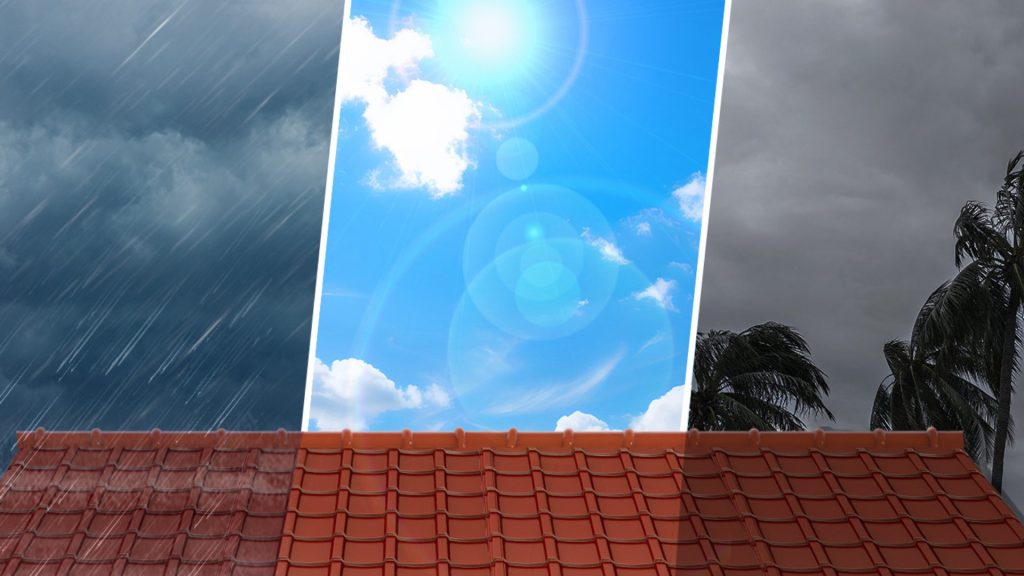
When choosing between a flat or sloped roof, one of the most important considerations is your local climate. For homes in areas with heavy rain, snow, or frequent storms, sloped roofs are generally the better option. The natural angle of a sloped roof allows for better water and snow runoff, which helps prevent pooling, leaks, and ice dams.
On the other hand, flat roofs work well in dry climates with little rainfall, such as the southwestern United States. In these regions, the lack of precipitation reduces the need for drainage, making a flat roof a more cost-effective option.
2. Aesthetic and Architectural Style
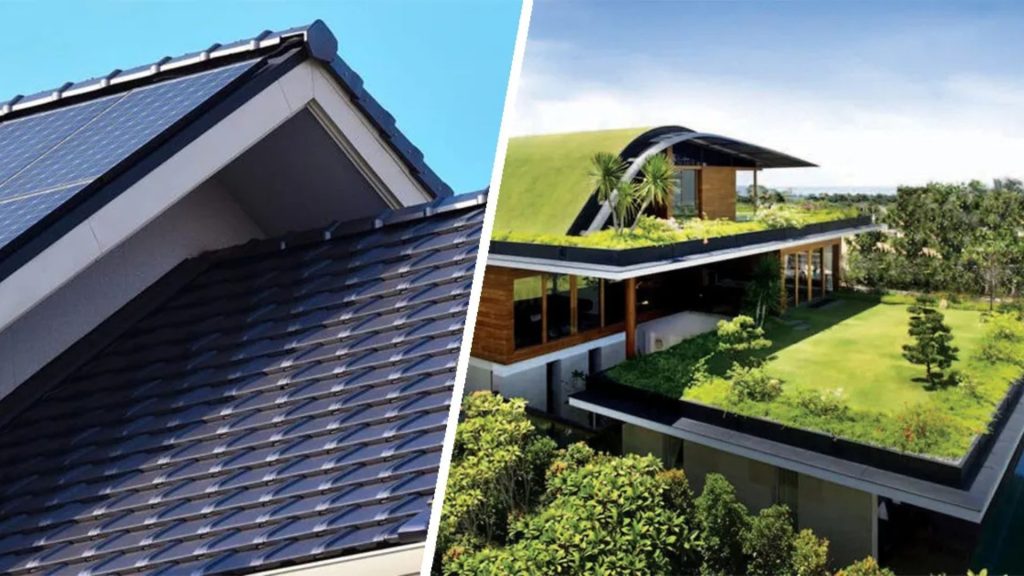
The style of your home plays a significant role in your roofing decision. Flat roofs are often associated with modern or contemporary homes, providing a sleek, minimalist look. These roofs are ideal for urban settings where space is limited and rooftop access is desired.
Sloped roofs, in contrast, are more traditional and are commonly found in suburban or rural settings. Their classic design and various style options (e.g., gable, hip) make them a versatile choice for many different architectural styles.
3. Budget and Long-Term Investment

Flat roofs typically have a lower initial installation cost compared to sloped roofs, making them a more budget-friendly option for homeowners. However, they may require more frequent maintenance and repairs, which can add up over time.
Sloped roofs, while more expensive upfront, tend to have lower long-term maintenance costs due to their durability and resistance to water damage. Additionally, sloped roofs can add more value to your home, which could make them a better long-term investment.
4. Energy Efficiency and Insulation
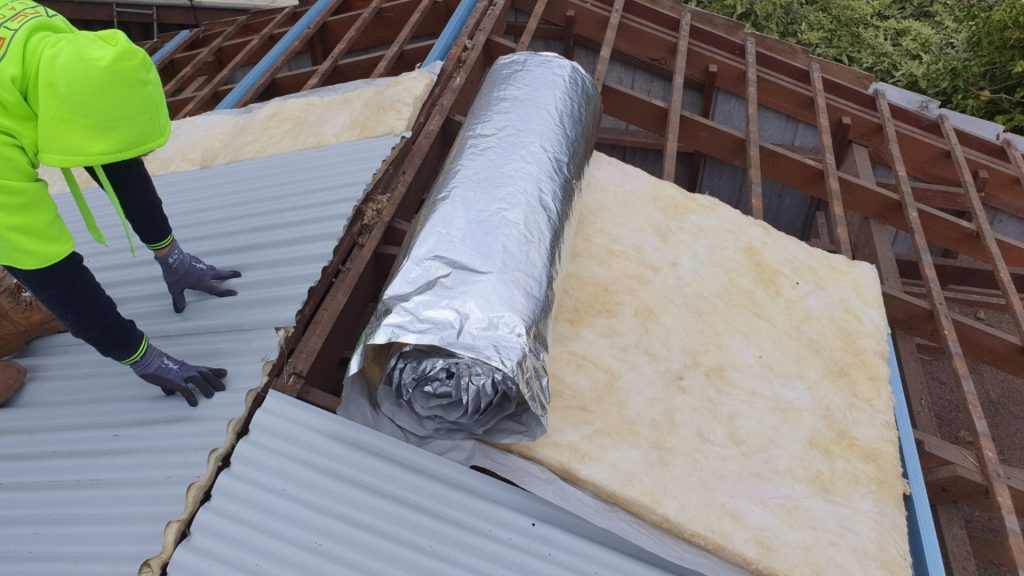
Sloped roofs provide more opportunities for insulation, particularly in the attic, which can improve energy efficiency. This is especially important in colder climates, where proper insulation can help keep your home warm during the winter months.
Flat roofs, on the other hand, can be equipped with reflective coatings or solar panels to enhance energy efficiency. In warmer climates, these options help reduce cooling costs by reflecting sunlight away from the home.
Roof Maintenance Tips for Both Roof Types

Regular roof maintenance is essential to ensure that your roof lasts for its full lifespan and protects your home effectively. Whether you have a flat roof or a sloped roof, each type requires its own approach to maintenance. Below are detailed maintenance tips to help you keep your roof in optimal condition:
Flat Roof Maintenance Tips
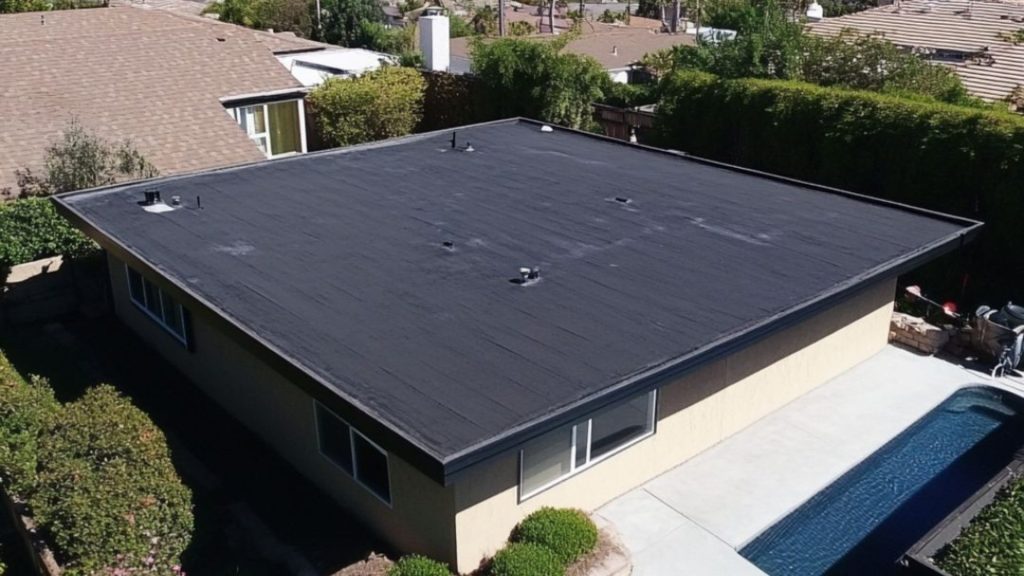
Flat roofs require consistent care to prevent issues like water pooling, leaks, and structural damage. Here’s a comprehensive guide to maintaining a flat roof:
1. Regular Inspections
Flat roofs are more vulnerable to damage than sloped roofs because of their minimal slope. Regular inspections, ideally twice a year (spring and fall), will help you spot problems before they become costly repairs.
What to Look For:
- Cracks: Small cracks in roofing materials can expand over time, leading to leaks.
- Ponding Water: Water should drain quickly from the roof. Ponding water can weaken the roofing materials and cause long-term damage.
- Blistering or Bubbles: These can form on the surface of the roof due to trapped moisture or air, leading to leaks.
Action Tip: Schedule professional inspections every few years to catch issues you may miss on your own.
2. Clear Debris Regularly
Flat roofs tend to accumulate leaves, branches, dirt, and other debris more easily than sloped roofs. If left unchecked, this debris can clog drains and scuppers, causing water buildup.
Action Tip:
- Clean Roof Surface: After heavy winds or storms, clear the roof of debris to prevent water from accumulating in low spots.
- Check Drains & Scuppers: Ensure that drains and scuppers are free from obstructions, especially after storms.
Why This Matters: Clogged drains lead to water pooling, which can weaken the roof membrane and cause leaks. Clean drains regularly to avoid costly water damage.
3. Check for Ponding
Ponding, or standing water, is one of the most common issues with flat roofs. It happens when water doesn’t drain properly and collects in depressions on the roof. This stagnant water can cause the roof material to degrade over time.
Action Tip:
- Install a Drainage System: If you notice ponding regularly, consider installing additional drainage channels or modifying the roof slope to improve water flow.
- Check After Rain: Inspect the roof immediately after heavy rain to ensure the water drains properly and doesn’t stay pooled in areas.
Why This Matters: Left unchecked, ponding water can cause the roof to warp, crack, and leak. Preventing ponding can significantly extend your roof’s lifespan.
4. Inspect for Signs of Wear or Damage on Roofing Membrane
Flat roofs usually have a single-layer membrane made of materials like EPDM, TPO, or modified bitumen. Over time, these materials can wear down due to UV exposure, foot traffic, or harsh weather conditions.
Action Tip:
- Look for Tears and Blisters: These issues can develop from heat exposure or physical damage.
- Check Seams and Edges: Inspect the seams where the membrane joins other parts of the roof. These are areas prone to leaks.
Why This Matters: Roof membranes protect against leaks and moisture infiltration. Addressing wear early can prevent costly repairs later.
Sloped Roof Maintenance Tips
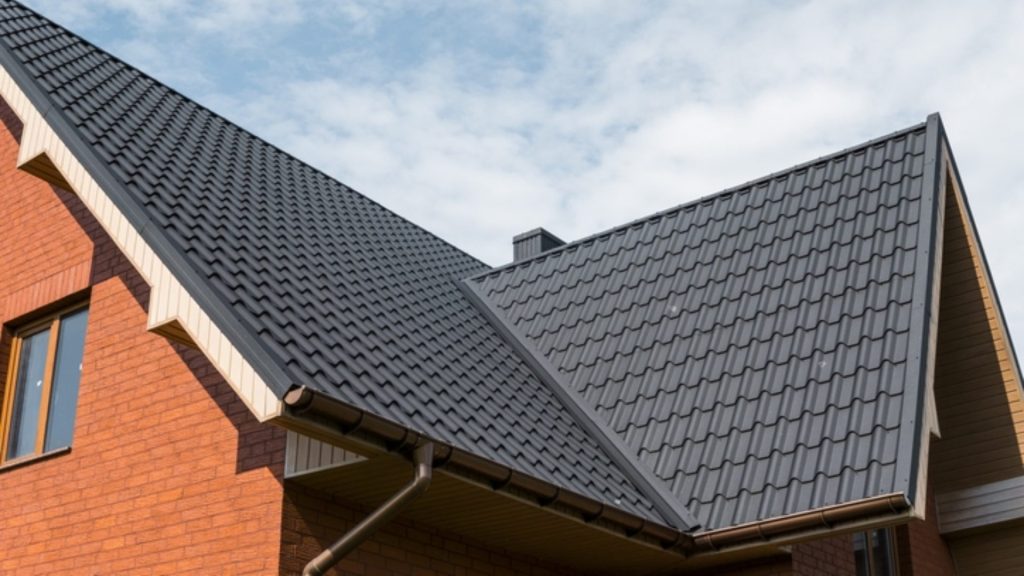
Sloped roofs are generally more resilient against the elements, but they still require regular maintenance to ensure their durability and effectiveness. Here’s how to care for a sloped roof:
1. Shingle or Tile Inspections
Over time, shingles or tiles on sloped roofs can become cracked, missing, or damaged due to weather conditions like hail, heavy winds, or aging. It’s important to inspect these components regularly.
What to Look For:
- Missing or Cracked Shingles/Tiles: If any are missing or cracked, water can infiltrate and damage your roof structure.
- Curling or Lifting Shingles: This often indicates that the shingles have reached the end of their lifespan or that there’s an underlying issue with your roof’s ventilation.
Action Tip:
- Replace Damaged Shingles: Replace cracked or missing shingles immediately to prevent leaks.
- Look for Granule Loss: If shingles are losing granules, it may be a sign of age, and replacement may be needed soon.
Why This Matters: Damaged shingles or tiles compromise your roof’s ability to protect your home from water infiltration and weather damage. Timely replacement helps prevent leaks and major repairs.
2. Gutter Cleaning
Gutters play an essential role in directing water away from your home, but they can quickly become clogged with leaves, twigs, and other debris. Clogged gutters can lead to water pooling on your roof or seeping into your home’s foundation.
Action Tip:
- Clean Gutters Quarterly: Clean your gutters at least four times a year, especially in fall after the leaves have fallen.
- Ensure Proper Downspout Flow: Ensure downspouts are clear and direct water at least 3 to 5 feet away from your home’s foundation.
Why This Matters: Keeping gutters clean ensures that rainwater is properly diverted away from your roof and home, preventing damage to the roof, siding, and foundation. Clogged gutters can lead to roof leaks, ice dams, or structural damage.
3. Flashing Check
Flashing is a critical component in sealing joints, vents, skylights, chimneys, and valleys where different roof planes meet. Over time, flashing can corrode, crack, or loosen, allowing water to seep through.
Action Tip:
- Inspect Flashing Regularly: Look for rust, cracks, or lifting edges around chimneys, vents, and skylights.
- Re-seal Flashing: If you notice any gaps or loose flashing, reseal them with roofing sealant or call a professional roofer to replace the flashing.
Why This Matters: Flashing is essential for preventing water infiltration around penetrations in your roof. Proper maintenance of flashing helps protect vulnerable areas from leaks and water damage.
4. Clean and Check for Moss or Algae Growth
In damp or shaded areas, moss and algae can grow on your roof’s surface, leading to premature aging of the roofing material.
Action Tip:
- Wash the Roof: Use a low-pressure power washer to remove moss or algae buildup, or apply a cleaning solution designed for roofing materials.
- Trim Overhanging Trees: If your roof is shaded by trees, trim branches regularly to reduce the amount of debris and moisture on the roof.
Why This Matters: Moss and algae retain moisture, which can cause your roofing materials to deteriorate faster. Removing them helps extend the life of your roof.
Which Roof Type Works Best for Your Home?
- Modern Homes in Urban Areas: Flat roofs are increasingly popular for their space efficiency and minimalist aesthetic. They’re perfect for green roofs, solar energy systems, or elevated outdoor living.
- Suburban or Family Homes: Sloped roofs remain the preferred choice due to their longevity, insulation potential, and timeless appearance.
Conclusion
Maintaining your roof is an ongoing task, but with regular inspections and a proactive approach to repairs, you can extend the life of your flat or sloped roof and prevent costly damages. Whether you have a flat roof that requires attention to drainage and membrane condition or a sloped roof that needs periodic shingle inspections and gutter cleaning, staying on top of maintenance will ensure your home remains protected and secure for years to come.
If you’re unsure about performing any of these tasks yourself, it’s always a good idea to consult with a professional roofer. Regular maintenance will not only improve your roof’s performance but also increase the long-term value of your home.
For a more personalized recommendation, we encourage you to contact Best Enterprises General Contracting for a free consultation. Our expert team can help you determine the best roofing solution for your home based on your specific needs and preferences.
Smart Home Technology for Your Bathroom: A Modern Upgrade
In today’s era of smart homes, technology is revolutionizing every part of our living spaces including the bathroom. With advancements in automation, voice control, and energy efficiency, modern bathrooms are becoming more convenient, luxurious, and sustainable. If you’re planning a bathroom renovation, working with a professional bathroom renovation company that specializes in smart technology can help you create a cutting-edge space.
This guide explores the latest smart home technologies for bathrooms, ensuring your upgrade is both functional and future-proof.
Why Smart Bathrooms Are the Future
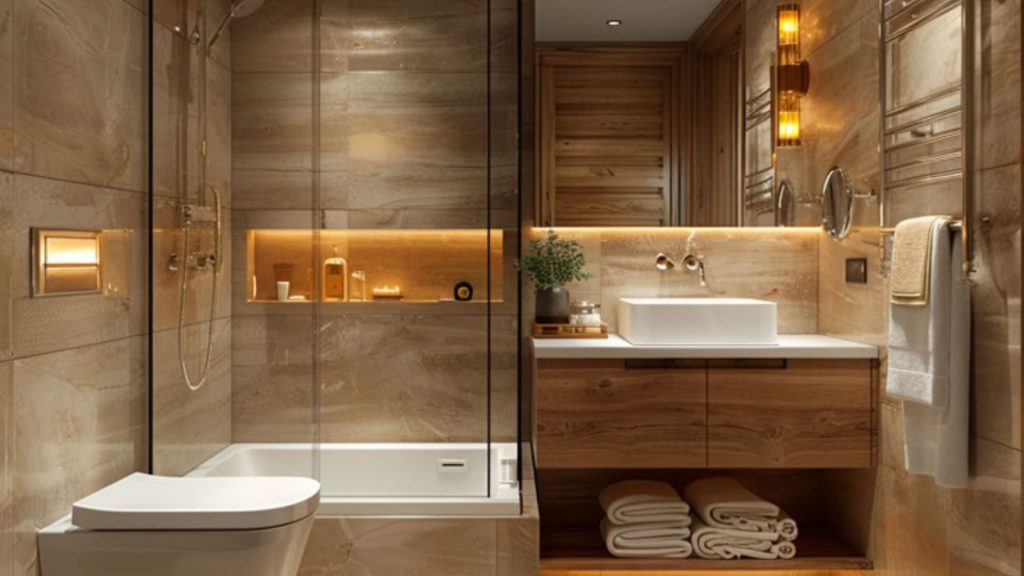
Homeowners today are placing a growing emphasis on comfort, convenience, and sustainability and smart bathrooms are at the forefront of this shift. By integrating advanced technology into everyday fixtures, smart bathrooms transform ordinary routines into personalized, spa-like experiences. Whether it’s a voice-activated shower that remembers your ideal settings, a toilet that cleans itself, or lighting that adjusts to your mood and schedule, these innovations prioritize hygiene, accessibility, and ease of use.
Beyond luxury, smart bathrooms also contribute to energy and water conservation, helping reduce utility costs and environmental impact. Many systems offer app-based monitoring and automation, giving homeowners greater control over usage and maintenance. As technology continues to evolve, smart bathrooms are quickly becoming not just a modern upgrade but a standard in future-forward home design.
Top Smart Bathroom Technologies to Consider
1. Smart Showers: Personalized & Efficient

Imagine stepping into a shower that automatically adjusts to your preferred temperature, pressure, and even lighting. Smart showers bring luxury and convenience together with features like Wi-Fi and voice control (compatible with Alexa or Google Assistant), customizable presets for multiple users, and water-saving technology such as flow regulators and usage tracking. Some models even include spa-like elements like rainfall showerheads and steam functions.
2. Smart Lighting: Ambiance & Convenience
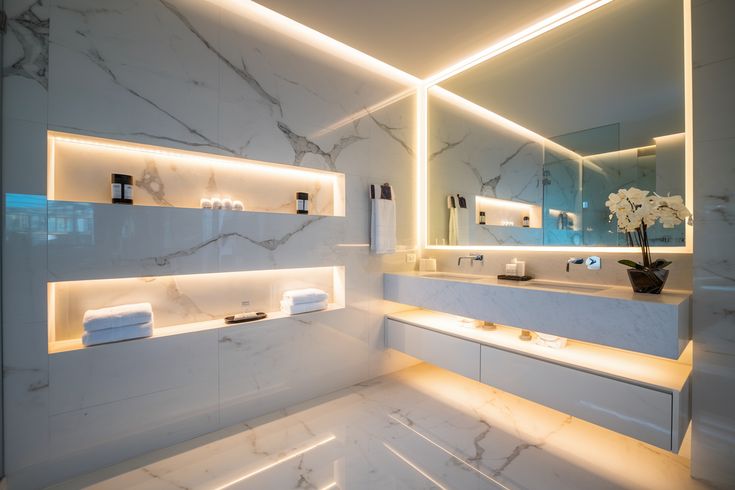
Lighting plays a crucial role in setting the mood and enhancing functionality in your bathroom. Smart lighting solutions offer adjustable color temperatures—bright white to energize your mornings and warm hues to help you unwind in the evenings. Motion sensors provide hands-free convenience, while voice and app control allow for effortless adjustments. Energy-efficient LED options help reduce electricity costs without sacrificing style.
3. Smart Mirrors: High-Tech Vanity Upgrades
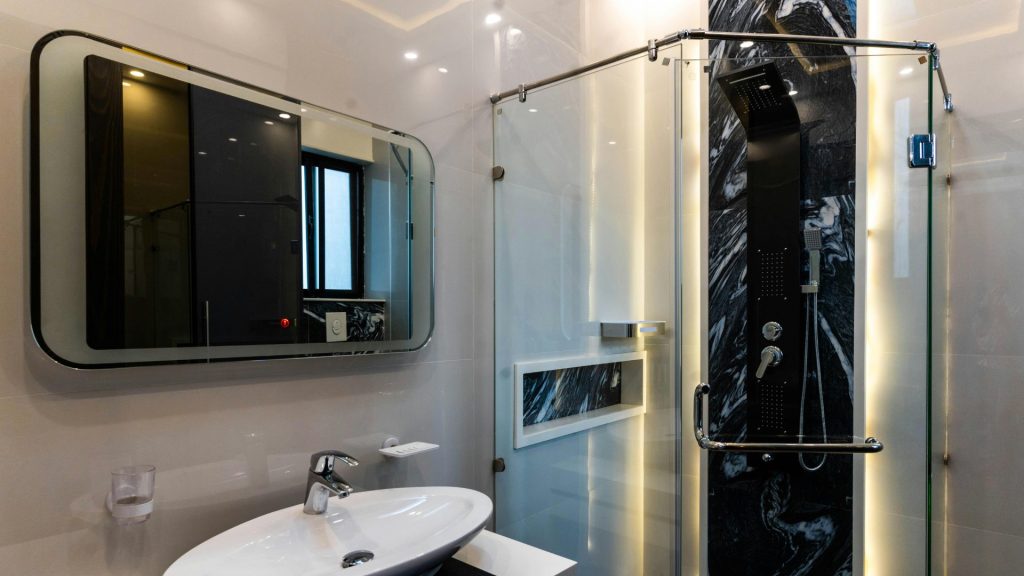
Today’s smart mirrors offer much more than just a reflection. With anti-fog technology, built-in LED lighting with adjustable brightness, and integrated touchscreen displays for checking the weather, news, or even streaming music, these mirrors combine function with flair. Voice control and Bluetooth connectivity add an extra layer of convenience, making smart mirrors a sleek and modern centerpiece for any bathroom.
4. Smart Toilets: Comfort & Hygiene
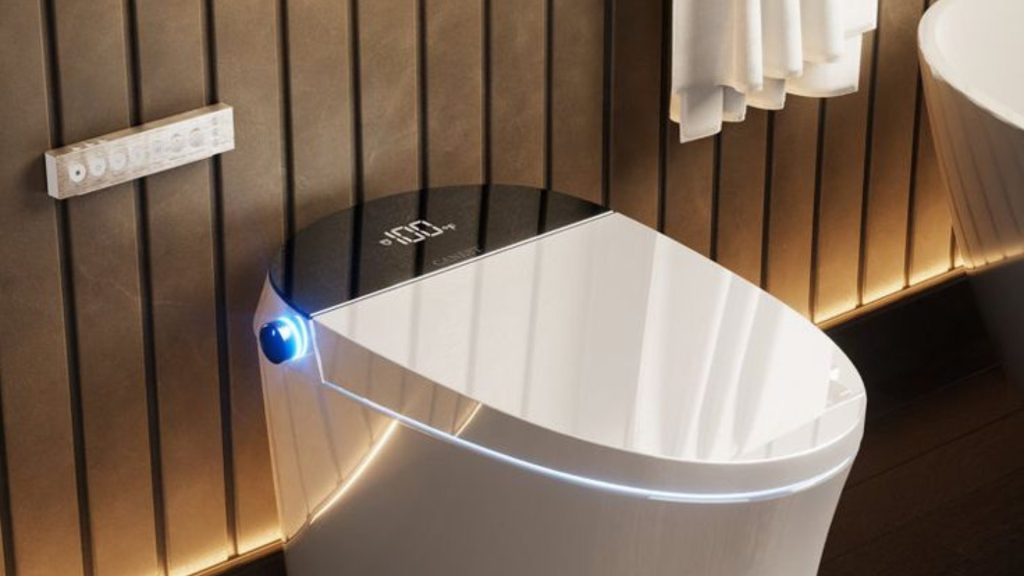
Smart toilets are transforming bathroom experiences with features designed for maximum comfort and cleanliness. Heated seats with adjustable temperature settings, customizable bidet functions, and self-cleaning UV sanitation promote both luxury and hygiene. Add in automatic flushing and built-in deodorizers, and you’ve got a toilet that’s as eco-conscious as it is cutting-edge.
5. Smart Faucets: Touchless & Water-Saving

Smart faucets offer hands-free convenience and impressive water-saving benefits. Equipped with motion sensors, these faucets help reduce the spread of germs while optimizing water use. Voice and app controls allow for precise temperature adjustments, while water usage tracking encourages conservation. They’re a smart addition for families and environmentally-minded homeowners alike.
6. Smart Ventilation: Humidity & Odor Control

Controlling humidity is essential in preventing mold and mildew in the bathroom. Smart ventilation systems automatically adjust fan speed based on humidity levels and can sync with smart home systems like Google Home or Alexa. Many also come with built-in air purifiers, improving air quality while keeping your space fresh and healthy.
7. Voice-Activated Assistants: Hands-Free Control
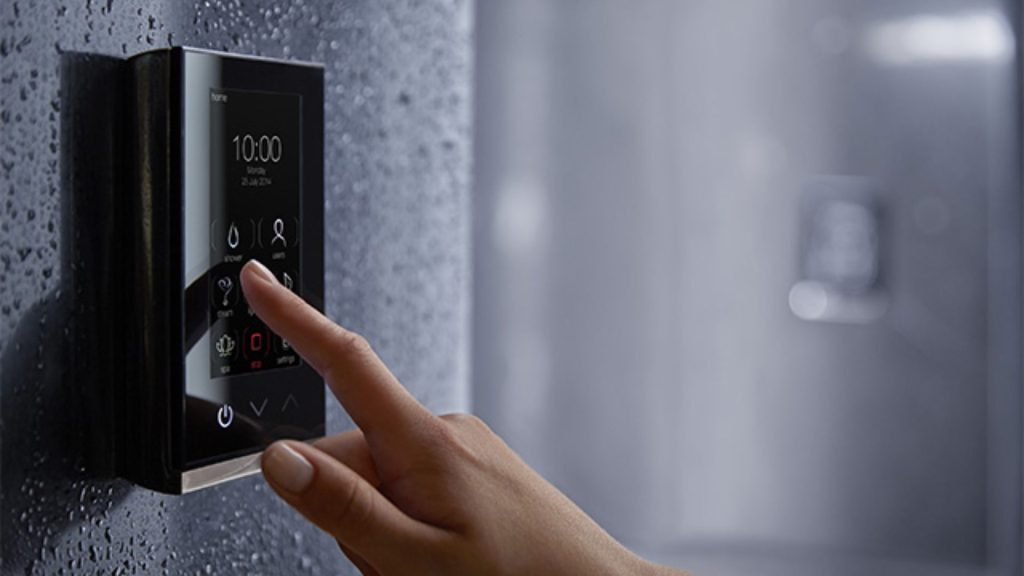
Incorporating voice-activated assistants like Amazon Alexa or Google Assistant into your bathroom setup offers true hands-free functionality. From adjusting lighting and playing your favorite playlist to controlling your shower or setting reminders for your skincare routine, these smart assistants streamline your morning and evening rituals with ease.
Planning Your Smart Bathroom Renovation
Ready to upgrade your bathroom into a smart, tech-savvy oasis? Here are some key tips to ensure a smooth and successful renovation:
- Consult a professional bathroom renovation company – Experts can help you choose the right smart features based on your space, lifestyle, and budget.
- Prioritize energy-efficient and water-saving technologies – Look for fixtures with ENERGY STAR or Water Sense certifications to lower utility bills while supporting sustainability.
- Check compatibility with your existing smart home ecosystem – Whether you use Apple HomeKit, Google Home, or Amazon Alexa, make sure new devices integrate seamlessly.
- Keep safety top of mind – Especially when installing voice-activated or app-controlled features near water sources. Proper insulation, waterproofing, and professional installation are key.
Smart planning leads to a smarter bathroom—both in function and form.
Conclusion: Elevate Your Bathroom with Smart Tech
Smart home technology is transforming bathrooms into high-tech retreats of comfort, efficiency, and luxury. Whether you’re upgrading to a smart shower, self-cleaning toilet, or hands-free lighting, these innovations enhance convenience while reducing energy and water consumption.
If you’re planning a renovation, working with an experienced bathroom renovation company like Best Enterprises General Contracting ensures a seamless integration of these technologies.
Custom Deck Design: 2025 Trends & Expert Tips for Your Outdoor Space
A custom deck design can completely transform your outdoor space into a functional and stylish retreat. Whether you’re working with a spacious backyard or a compact patio, a personalized deck enhances your home’s aesthetic appeal, boosts property value, and extends your living area for entertaining or relaxing.
This guide explores the latest deck design trends, material choices, space-saving solutions, and expert tips to help you create the perfect outdoor oasis.
Essential Custom Deck Design Tips for Homeowners
1. Multi-Level & Tiered Decks
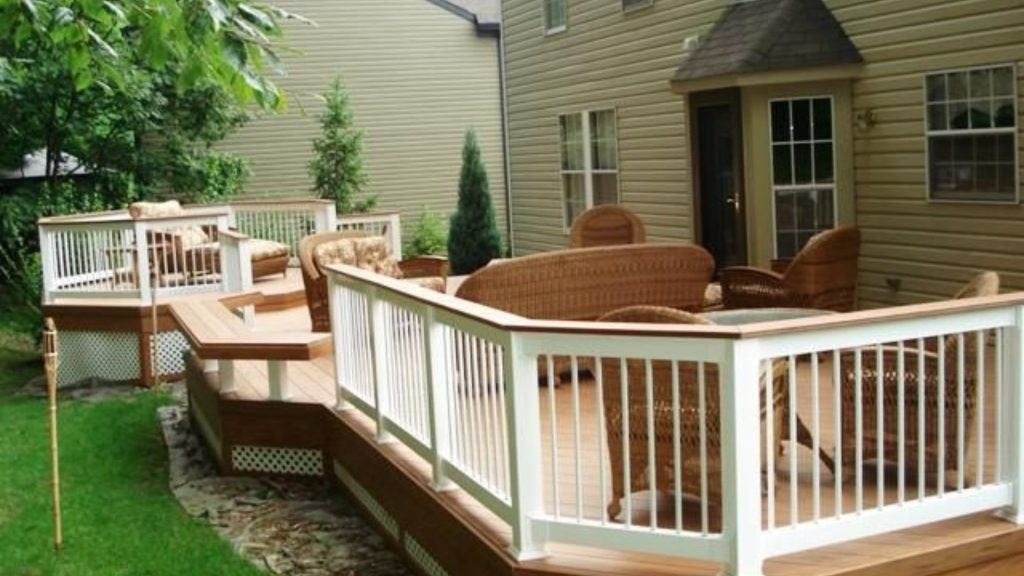
Multi-level and tiered decks are gaining popularity as they maximize space and add visual interest. These designs create distinct zones for dining, lounging, and grilling, enhancing the flow and functionality of your outdoor area. Features like steps, glass railings, and built-in seating maintain an open and inviting feel.
2. Sustainable & Eco-Friendly Materials

Homeowners are increasingly opting for sustainable decking materials. Options like thermally modified wood, bamboo decking, and recycled composite decking made from plastic waste and wood fibers offer durability and environmental benefits. These materials are both durable and environmentally friendly.
3. Built-In Seating & Storage
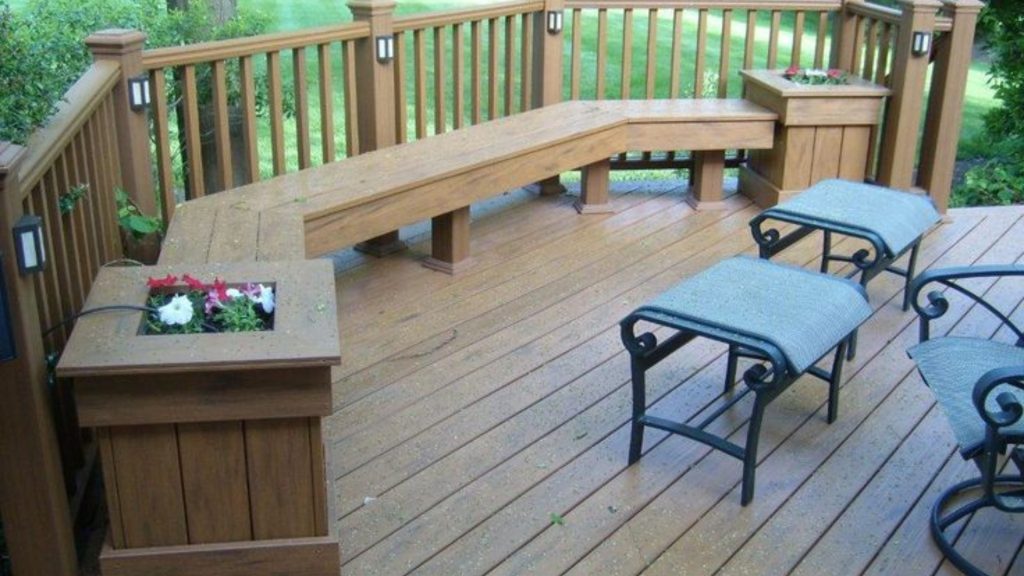
Incorporating built-in seating and storage solutions enhances both the functionality and aesthetics of your deck. Benches with hidden compartments keep the area tidy, while integrated planters add a touch of greenery. These features are especially beneficial for optimizing space in smaller outdoor areas.
4. Mixed Materials (Wood, Metal & Composite Combos)

Combining different materials adds depth and texture to modern decks. For example, pairing wood with metal or composite materials creates a unique and contemporary look that stands out while maintaining practicality.
5. Smart Deck Features
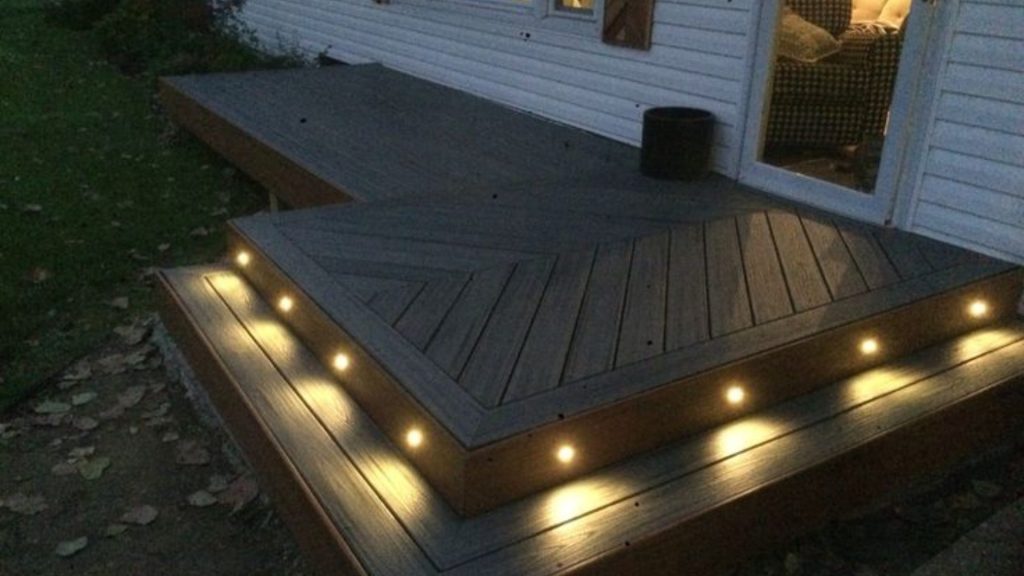
Integrating smart technology into deck design enhances convenience and ambiance. Energy-efficient LED lighting systems, automated pergolas, and heating elements allow for year-round enjoyment of your outdoor space. These features can be controlled via smartphones, adding a modern touch to your deck.
Custom Deck Design Tips for Homeowners
1. Assess Your Space & Needs
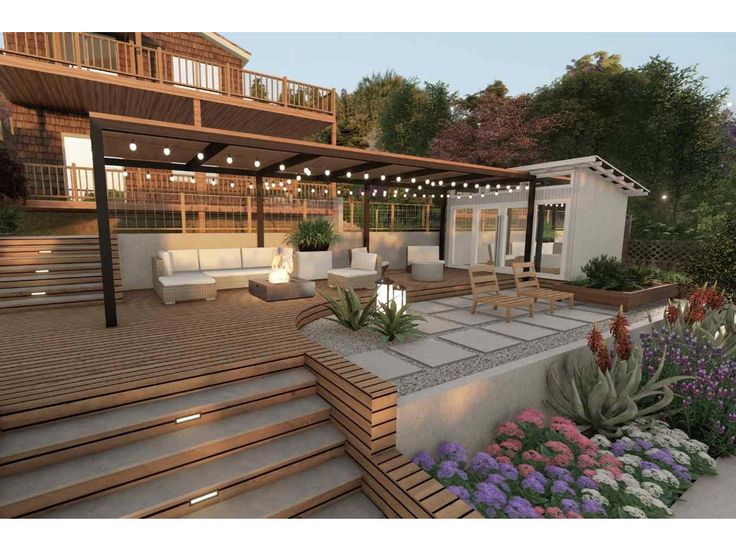
Begin by evaluating your outdoor area’s dimensions, sun exposure, and primary functions be it entertaining, dining, or relaxation. Consider factors like traffic flow, seating arrangements, and proximity to the house to optimize usability.
2. Choose the Right Materials for Your Climate

Selecting materials suited to your local climate ensures longevity and reduces maintenance. For instance, composite decking combines recycled plastics with wood fibers, offering a durable and low-maintenance alternative to natural wood. While natural wood decks have a classic appeal, they may require more upkeep compared to composites.
3. Optimize for Small Spaces

Maximize limited space by incorporating vertical gardens, built-in seating, and foldable furniture. Floating decks can create a modern, open feel, while multi-functional elements like storage benches help utilize every inch effectively.
4. Incorporate Privacy Solutions

Enhance comfort and seclusion with features like pergolas, lattice panels, privacy screens, or tall greenery. These additions not only offer shade and protection but also contribute to a cozy and stylish outdoor retreat.
5. Work with a Professional Contractor

Engaging an experienced contractor ensures safety, adherence to local building codes, and high-quality construction. Companies like Best Enterprises General Contracting offer comprehensive design-to-installation services, delivering customized decks tailored to your preferences.
Affordable Modern Outdoor Deck Ideas
1. DIY vs. Professional Installation
While a DIY approach can save on labor costs, it requires time, tools, and expertise. Professional installation guarantees safety, proper permits, and long-term durability, often resulting in higher value and fewer repairs over time.
2. Budget-Friendly Materials
To keep costs down, consider materials like pressure-treated pine, which is affordable yet durable. Alternatively, composite decking, though initially more expensive, requires less maintenance and has a longer lifespan, potentially reducing long-term expenses.
3. Repurpose Existing Structures
Transforming old patios or worn-out decks into stylish, functional spaces can be a cost-effective solution. Upcycling existing frameworks reduces costs while maintaining structural integrity, making renovations more sustainable and budget-friendly.
Conclusion
A custom deck elevates your outdoor living experience by blending functionality with style. Whether you envision a cozy retreat for relaxation or an entertainment hub for gatherings, thoughtful design and high-quality materials are key. By incorporating durable materials, innovative layouts, and expert craftsmanship, you can create a space that enhances your home’s value and provides lasting enjoyment.
Ready to transform your outdoor space? Contact Best Enterprises General Contracting today for a personalized deck design quote and take the first step toward your dream outdoor oasis!
Covered Porches vs Open Porches – Which One is Best for You?
Imagine starting your day with a cup of coffee on a porch that perfectly complements your lifestyle be it a cozy covered porch or an open-air design. Selecting the appropriate porch type is more than a design choice; it’s about enhancing your home’s functionality, value, and comfort.
This guide delves into the distinctions between covered and open porches, examining their benefits and drawbacks. We’ll provide expert insights to assist you in making an informed decision for your home, whether you’re embarking on new construction or a remodeling project.
What Are Covered Porches and Open Porches?
Covered Porches
A covered porch is a roofed structure attached to your home, offering protection from various weather conditions. It serves as an extension of your living space, suitable for outdoor dining, lounging, or even as a home office. Covered porches are ideal for homeowners seeking to enjoy their outdoor areas year-round, regardless of the weather.
Key Features:
- Roofed structure with support beams or columns.
- Options for screens, glass enclosures, or open sides.
- Seamless integration with the home’s architecture.
Open Porches
An open porch is an uncovered outdoor space that connects you directly with nature. It’s an excellent choice for those who appreciate an open-air experience and prefer a simpler, more cost-effective structure. Open porches are particularly suitable for regions with mild climates where weather protection is less critical.
Key Features:
- Absence of a roof, though partial shade structures like pergolas can be included.
- Minimalist design that harmonizes with landscaping.
- Ideal for sunbathing, stargazing, or enjoying a breeze.
Covered Porches vs. Open Porches – Key Differences
1. Protection from Weather
Covered porches provide shelter from rain, snow, and harsh sunlight, making them usable in all seasons. Open porches, while beautiful, are exposed to the elements, limiting their use during bad weather.
Pro Tip: If you live in an area with extreme weather conditions (e.g., heavy snowfall or intense sun), a covered porch is a more practical choice.
2. Usability and Functionality
Covered porches are versatile spaces that can serve as outdoor living rooms, dining areas, or even home offices. Open porches are more casual, ideal for relaxing or entertaining on warm days.
Pro Tip: Consider how you plan to use the space. If you want a multi-functional area, a covered porch is the way to go.
3. Aesthetic Appeal
Covered porches add architectural depth to your home, often enhancing its curb appeal. Open porches offer a minimalist, natural look that blends seamlessly with your landscaping.
Pro Tip: Match your porch style to your home’s architecture. For example, a farmhouse-style home pairs well with a covered porch, while a beach house might suit an open porch.
Pros and Cons of Covered Porches
Pros:
- Year-Round Use: Enjoy in any season, rain or shine.
- Added Value & Curb Appeal: Enhances aesthetics and resale value.
- Versatile Space: Ideal for dining, lounging, or remote work.
- Weather Protection: Shields from UV rays, rain, and snow.
- Longer-Lasting Furniture: Reduces wear and tear on outdoor furnishings.
- Screening Option: Can be enclosed to keep out insects
Cons:
- Higher Cost: Typically $10,000–$30,000, depending on materials and size.
- Maintenance Needs: Requires regular cleaning and inspection.
- Permit Requirements: May involve additional paperwork and costs.
- Reduced Natural Light: Can make adjacent indoor spaces darker.
Pros and Cons of Open Porches
Pros:
- More Affordable: Generally costs $5,000–$15,000.
- Open-Air Experience: Offers direct connection with nature.
- Lower Maintenance: No roof, gutters, or structural upkeep.
- Aesthetic Appeal: Blends seamlessly with landscaping.
- Fewer Permit Requirements: Often easier to build.
Cons:
- Weather Exposure: No protection from rain, sun, or snow.
- Less Privacy: More visible to neighbors and passersby.
- Furniture Wear: Outdoor furniture is fully exposed to elements
Which Porch Type is Best for Your Home?
When choosing between a covered porch and an open porch, consider the following factors:
- Climate: If you live in an area with harsh weather conditions, such as heavy rain, snowfall, or intense heat, a covered porch is a better option. For regions with mild weather, an open porch can be a great way to enjoy the outdoors.
- Budget: Covered porches generally require a higher upfront investment but can offer greater long-term value by increasing your home’s resale potential. Open porches are more budget-friendly but may require additional upkeep due to weather exposure.
- Lifestyle Needs: Do you want an all-season entertainment space or a simple outdoor area for relaxation? If you prefer a versatile, shaded area that can be used for multiple activities, a covered porch is the best choice. If you love an unobstructed view of the outdoors and a more minimalistic setup, an open porch may be the way to go.
- Aesthetic Preferences: Covered porches add architectural interest and integrate with the home’s overall design, while open porches provide a natural, airy look that seamlessly blends with landscaping.
Maintenance Tips for Covered and Open Porches
No matter which porch type you choose, regular maintenance will keep it looking beautiful and functional for years.
Covered Porch Maintenance:
- Clean gutters and roofing to prevent water buildup and potential damage.
- Inspect for leaks or structural wear annually and repair as needed.
- Seal and stain wooden components every 2–3 years to protect against moisture and UV exposure.
- Check for mold or mildew growth, especially in humid climates.
Open Porch Maintenance:
- Sweep and clean debris regularly to maintain a tidy appearance.
- Seal and stain wooden floors annually to prevent warping or cracking.
- Inspect railings and flooring for any signs of damage or deterioration.
- Protect outdoor furniture with weather-resistant covers or move it inside during extreme weather conditions.
Conclusion: Making the Right Choice
Choosing between a covered porch and an open porch ultimately depends on your personal needs, budget, and climate considerations. A covered porch provides year-round usability, enhanced home value, and versatile functionality, making it ideal for homeowners looking for a long-term investment. Meanwhile, an open porch offers a cost-effective, low-maintenance option that embraces outdoor living.
Still unsure which porch type is best for your home? Consulting with a professional contractor like Best Enterprises General Contracting can help you make an informed decision based on your home’s design and your personal preferences. With expert guidance, you can create a beautiful, functional outdoor space tailored to your needs.
Start planning your dream porch today with Best Enterprises General Contracting—your trusted partner in home improvement!
Top Kitchen Remodeling Trends Transforming Homes in 2025
Imagine walking into a kitchen that’s not just a place to cook but a hub of sustainability, technology, and style welcome to 2025’s kitchen remodeling trends. As kitchens continue to evolve into multifunctional spaces for cooking, dining, and socializing, staying ahead of the latest trends is essential for homeowners planning a remodel.
In this article, we’ll explore the top kitchen remodeling trends transforming homes in 2025, offering actionable insights, expert guidance, and real-world examples to help you create a kitchen that’s both functional and stylish. Whether you’re planning a full renovation or a simple update, these trends will inspire you to reimagine your space.
Why Kitchen Remodeling Trends Matter in 2025
Kitchens are no longer just functional spaces, they’re the heart of the home. In 2025, kitchen design is all about sustainability, technology, and personalization. According to a 2023 survey, 78% of homeowners prioritize kitchen remodels for increasing home value, making it one of the most impactful home improvement projects. From eco-friendly materials to smart appliances, the trends of 2025 are designed to enhance both the functionality and aesthetics of your kitchen.
1. Sustainable Kitchen Design: Eco-Friendly and Stylish
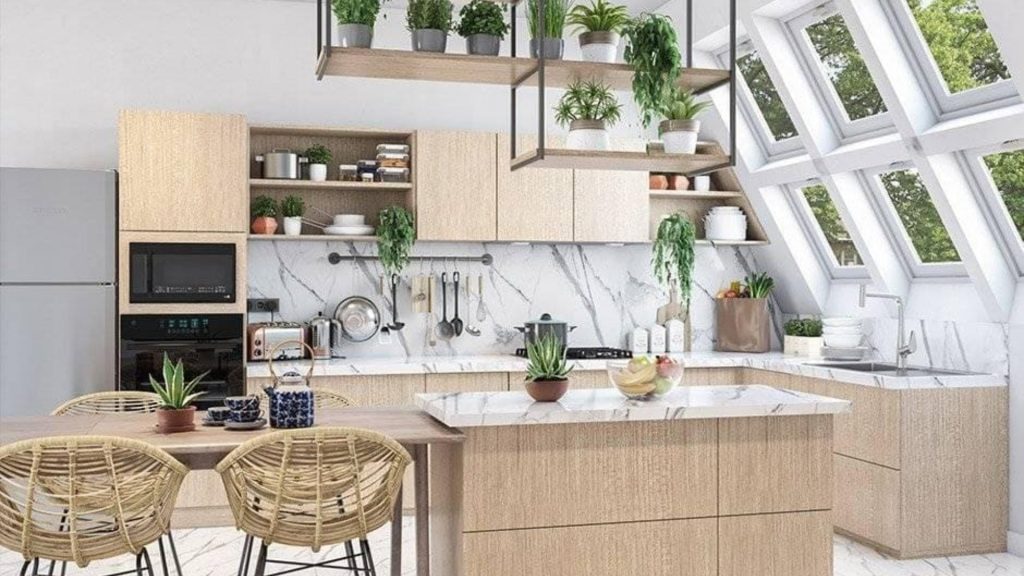
Sustainability is no longer a niche trend, it’s a necessity. In 2025, homeowners are embracing eco-friendly materials like reclaimed wood, recycled glass, and low-VOC paints. Energy-efficient appliances and water-saving fixtures are also gaining popularity, helping reduce both environmental impact and utility bills. For example, a recent project by Best Enterprises used bamboo cabinetry and quartz countertops, combining durability with eco-friendliness. These materials not only look stunning but also contribute to a healthier planet.
A sustainable kitchen design helps lower environmental impact by reducing waste and energy consumption. It also leads to long-term cost savings, as energy-efficient appliances can cut utility bills by up to 30%. Additionally, eco-conscious features increase home value, making properties more attractive to buyers. To create a green kitchen, homeowners can replace old appliances with ENERGY STAR-rated models, opt for locally sourced materials, and install water-saving faucets and LED lighting for added efficiency.
2. Smart Kitchen Innovations: Technology Meets Functionality

Smart kitchens are revolutionizing the way we cook and interact with our spaces. In 2025, Wi-Fi-enabled ovens, smart refrigerators with inventory tracking, and voice-controlled faucets are becoming mainstream. These innovations not only improve convenience but also enhance efficiency. For instance, a smart refrigerator can alert you when you’re running low on groceries, while a voice-controlled faucet can measure precise amounts of water for recipes.
Smart storage solutions, such as motorized cabinets, pull-out pantry systems, and app-controlled lighting, are transforming kitchen organization. A recent project by Best Enterprises incorporated a smart kitchen system that reduced energy usage by 20%, proving that technology can be both functional and sustainable. When planning a smart kitchen, experts recommend prioritizing devices that integrate seamlessly with your existing smart home ecosystem for maximum efficiency.
3. Multifunctional Kitchen Islands: The Heart of the Kitchen

Kitchen islands are no longer just for prep work; they’re becoming the focal point of the kitchen. In 2025, expect to see islands with built-in storage, seating, and even appliances like sinks or wine coolers. A well-designed island can serve multiple purposes, from meal preparation to casual dining and even work-from-home setups.
For smaller kitchens, a fold-down island can double as a dining table, maximizing functionality without sacrificing space. Homeowners can also incorporate hidden storage within islands to keep kitchen essentials neatly tucked away. As an expert tip, designers suggest planning islands with flexibility in mind to accommodate changing needs over time.
4. Bold Colors and Personalized Aesthetics
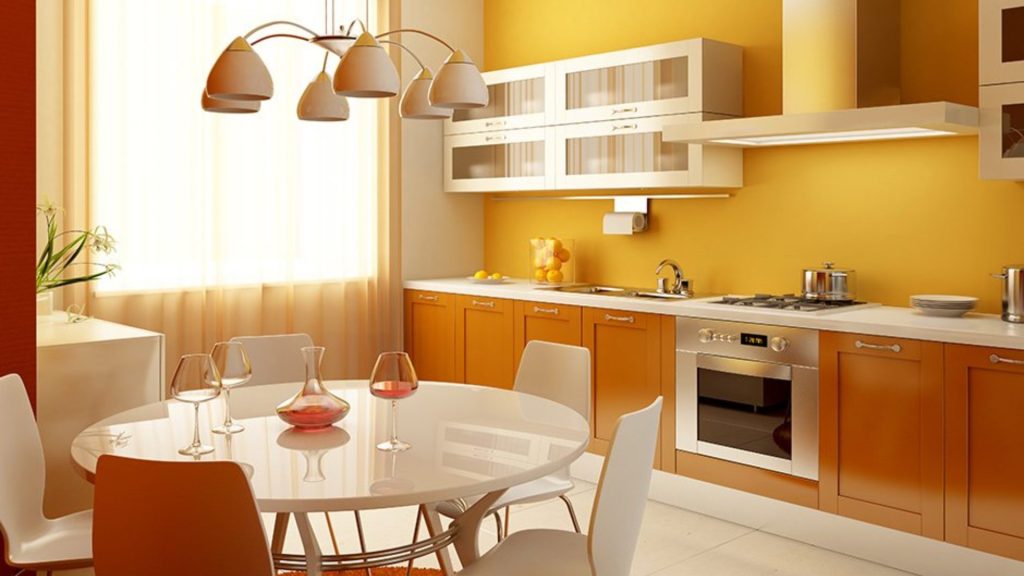
Neutral kitchens are taking a backseat as homeowners embrace bold colors like deep blues, emerald greens, and matte black. These hues add personality and depth to kitchen spaces while making a strong visual impact. Additionally, mixing materials such as wood, metal, and stone creates dynamic and visually interesting designs.
Personalization is another key trend, with homeowners opting for custom cabinetry, unique backsplashes, and statement lighting to reflect their individual styles. A recent remodel featured navy blue cabinets with brass handles, creating a striking yet elegant aesthetic. This shift toward bolder design choices allows homeowners to create kitchens that feel both modern and timeless.
5. Open Shelving and Minimalist Design
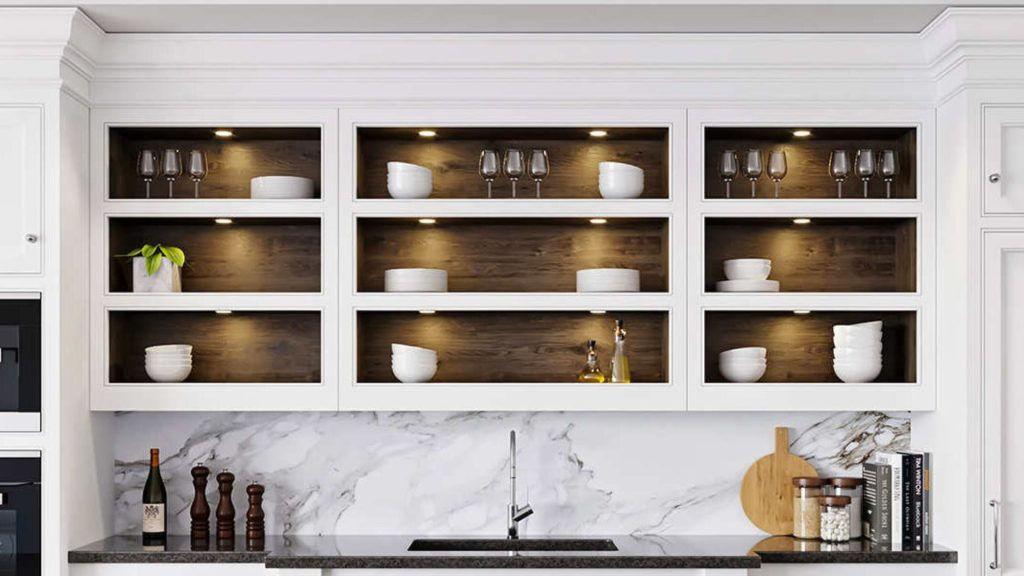
Minimalist kitchens are gaining popularity in 2025, with open shelving replacing traditional upper cabinets. Open shelves create a sense of openness and allow homeowners to display decorative items, fine dishware, or everyday essentials in an organized manner. Floating shelves, in particular, offer a sleek, modern look while maintaining functionality.
Minimalist design focuses on clean lines and hidden storage, keeping countertops clutter-free. By incorporating streamlined cabinetry, handle less drawers, and integrated appliances, homeowners can achieve a contemporary aesthetic without sacrificing usability. To maintain a minimalist look, experts recommend prioritizing functional storage solutions and keeping frequently used items within easy reach.
6. Mixed Materials and Textures
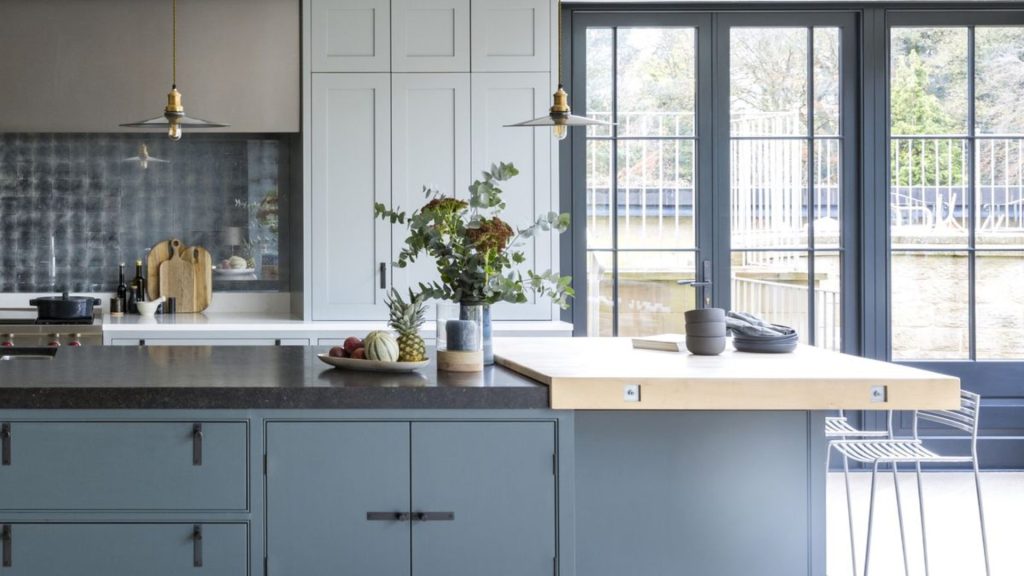
Mixing contrasting materials like wood, metal, and stone adds depth and visual interest to a kitchen. For instance, a marble countertop paired with a matte black backsplash creates a striking yet cohesive look. Textured finishes, such as brushed metals or natural stone backsplashes, enhance the overall design by adding a layer of sophistication.
Incorporating a variety of textures allows homeowners to create a balanced yet visually appealing kitchen. Some popular combinations include pairing warm wood tones with cool metallic, using matte and glossy surfaces together, or introducing tactile materials like concrete and quartz. These combinations not only enhance aesthetics but also contribute to a more engaging and dynamic kitchen environment.
Conclusion: Transform Your Kitchen with 2025 Trends
Incorporating these 2025 kitchen remodeling trends can transform your space into a functional, stylish, and sustainable hub of your home. Whether you’re planning a full renovation or a simple update, these insights will help you make informed decisions. From smart kitchen innovations to bold color choices and eco-friendly designs, the possibilities for enhancing your kitchen are endless.
Ready to transform your kitchen? Contact Best Enterprises General Contracting today for a free consultation!





